Celebrating South Africa's sustainability
Foreword
In 1998, the Mail & Guardian launched this supplement, Greening the Future. This was near the end of a big decade for sustainability, with the Rio Earth Summit in 1992 and the Kyoto Protocol on climate change in 1997. In a newly-free South Africa, there was hope that we could create a better world.
Creating that world would be the work of individuals, groups, government and companies.
The intro to those first awards noted that they “are aimed at recognising these new trends and rewarding those companies, organisations and individuals who, by investing in the environment, are investing in our future”.
Our awards would therefore be a way of encouraging this progress, of celebrating those who wake up every day and work to make this country a better, more sustainable place.
In big picture terms, it feels like we have not gone far since then. South Africa remains, per person, the 14th highest emitter of carbon dioxide in the world. Eskom continues to dominate our pollution landscape, both poisoning the communities where coal power plants work and the wider world with greenhouse gasses.
We are still locked into a dangerous level of climate change. The world heating at deadly levels. Ecosystems are collapsing. The natural world is in freefall because we have changed so much, so quickly. That pollution is aided by non-compliant corporations which might have greased the palms of some government officials to continue with business-as-usual. And all of this, has caused numerous types of ailments, while threatening our future well-being.
After Covid-19, it does seem like 2020 is a really bleak time for us, and our planet. But in the midst of the lockdown nature began to breathe again. As we slowed down, the world literally, started shaking less. Pollution decreased. Rivers became healthier. We breathed cleaner air. This came at a vast human cost. It is, all the same, a sign of what we could do.
The projects and individuals that we have awarded for over two decades are all showing us the way. This year’s finalists and winners give us, if we listen to them, a blueprint for a more sustainable world.
That’s something we all want.
Sipho Kings, Acting editor-in-chief, Mail & Guardian
FOCUS PILLARS
Agribusiness
With deep care for the industry that nourishes us all, these finalists are dedicated to improving the ways in which farming is conducted at a large or small scale.
Clean Air & the quality of life
Using environmental edu-cation and activism as a vehicle for social change, finalists in this category are improving the status of humans and the natural environment alike.
Forests
Placing their efforts in preserving and restoring the natural world, finalists in this category are dedicated to the cause of enabling plant life to flourish – for the good of all species.
Oceans and waterways
Dedicated to protecting one of earth’s most precious resources and the complex ecosystems that exist within it, these finalists fight to preserve safe, clean water for all.
Sustainable Design
Producing innovation that applies their research or their own lived experience, finalists in this category create products that enable others to live more sustainably with minimal effort.
Urban Spaces
Whether by rehabilitating city and rural environments with everyday actions or by starting at the beginning and creating new spaces from scratch, these finalists seek to build more liveable, sustainable environments.
Criteria
What we looked for as we chose this year’s list
Care: We sought finalists whose efforts towards sustainability and a greener future stem from genuine care for the world around them. Of course, there’s no positive or negative test for a sentiment, but we aimed to identify those whose work for the environment considers the wellbeing of all those around them, and above all does not cause harm in one area in the process of doing good in another.
Holistic Solutions: Projects that particularly impressed us were those which recognised that sustainability is an issue that permeates many aspects of our everyday life – and planned their interventions accordingly. Many of this year’s finalists stood out by creating a secondary benefit, be it job creation or improved everyday efficiency, in the process of addressing an environmental problem.
Results: We considered individuals, organisations and projects that have already achieved measurable results. Every attempt to care for our planet in small or great acts is valuable. Projects selected for our list needn’t be operating at a great scale. We chose to celebrate those endeavours that are at a particularly promising stage of their development.
Efficiency: Sheer hard work and determination will always prove impressive. Ideas that make helping out a little easier hold particular value in the context of sustainability. We prioritised projects in which far-reaching effects can be achieved by enabling sustainable choices in everyday life.
Innovation: In seeking this year’s finalists, we aimed to identify those whose approach to environmentalism is distinctive, smart, and original. “Making a plan” in the face of unprecedented circumstances has been something of a theme this year, and taking an innovative approach to old problems will stand us all in good stead for the future.
Staying Power: Recognising that the fight for a greener world is not one that may be resolved overnight, we attempted to identify finalists who are in it for the long run – to make a long-term difference, and to see them through. Some have already been around for decades, while others are just starting out.
Climate change initiatives offer the City of Johannesburg (CoJ) an opportunity to raise living standards for all
The City of Johannesburg Mayoral Committee has approved a city-wide Climate Action Plan, (CAP) with the objective of transitioning towards carbon neutrality and a resilient city by 2050. It is a long-term ambitious plan that seeks to contribute to the objectives of the City’s Growth & Development Plan and the aspirations of the Paris Agreement.
To ensure implementation takes place, the plan has immediate, short- and medium-term planning and implementation horizons. The Plan demonstrate that climate change is not solely an environmental issue, but is inextricably linked to the challenges of eradicating poverty, accelerating service delivery and increasing inclusiveness. Climate change initiatives offer the City of Johannesburg (CoJ) an opportunity to raise living standards for all at a faster rate by following a low-carbon and resilience development path. There is also evidence that reducing inequality helps to drive better environmental outcomes.
The CAP seeks to accelerate implementation in the following 10 areas to reduce greenhouse gases and adapt to climate change:
- Ensuring affordable and clean energy — increasing the City’s renewable energy uptake;
- Improving waste management — reducing and diverting municipal solid waste generation;
- Optimizing energy efficiency in buildings — maximising energy efficiency in new buildings, City-owned building and all buildings in the long run;
- Enabling next generation mobility, with a focus on providing access to safe, affordable and carbon-neutral transport;
- Improving water supply and treatment — reviewing energy usage and potential energy savings and opportunities;
- Ensuring water security — providing access to reliable water supply and sanitation services, and ensuring water security;
- Ensuring resilient human settlements — providing access to safe and sustainable open spaces, by increasing tree coverage;
- Managing flood and drought — enhancing early warning systems for climatic hazards;
- Ensuring resilient city infrastructure — upgrading urban stormwater infrastructure and urban planning; and
- Ensuring healthy communities — intensifying measures to improve the quality of air, green coverage and passive building cooling, and improving access to fresh food.
Why a climate change focus?
The CoJ is the hub for a large proportion of South Africa’s economic activities such as mining, heavy industry, commercial enterprise, and subsequently increasing urban population. As a result, there is immense pressure on the receiving environment, impacting negatively on our climate and the quality of air we breathe. The following are some of the reasons why the City is focusing so strongly on climate change:
- To understand the imminent and inevitable impacts of climate change, their effect, and to identify areas and communities that are most vulnerable to those impacts;
- To manage and respond to climate change impacts by improving the City’s resilience;
- To contribute towards a low carbon future in a just manner;
- To make a meaningful contribution towards the national and global climate targets under the Paris Agreement and the Sustainable Development Goals (SDGs), as a responsible national and global citizen;
- To help in ensuring a green recovery of the City from the Covid-19 pandemic; and
- To demonstrate leadership.
These are some practical actions the City has been implementing to address climate change
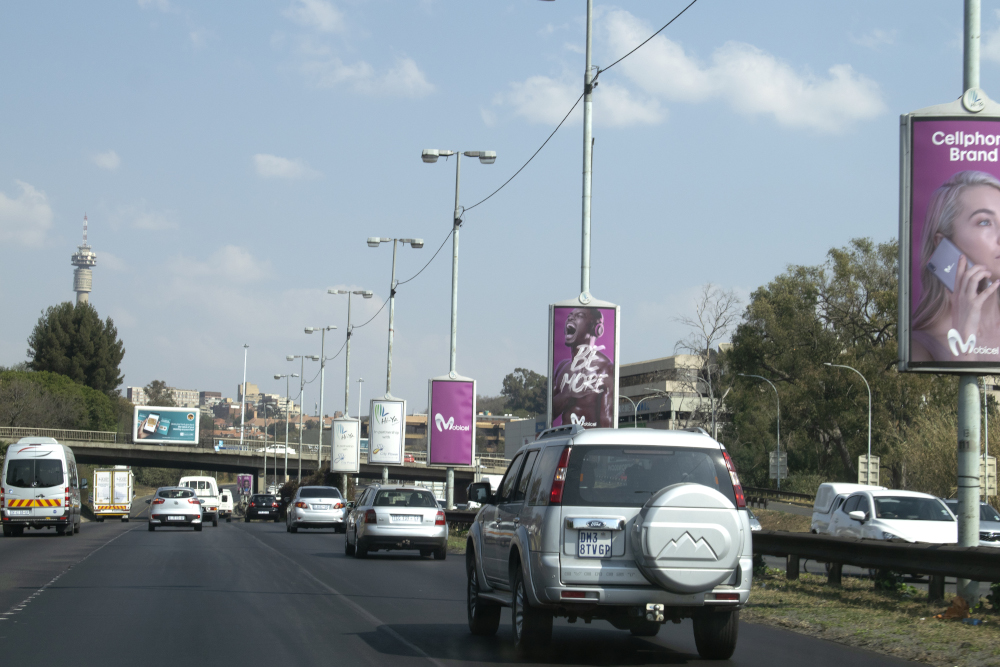 Energy Efficient streetlights on M1 & M2 in Joburg (Grant funded by Dept. of Minerals Resources and Energy and implemented by City Power
Energy Efficient streetlights on M1 & M2 in Joburg (Grant funded by Dept. of Minerals Resources and Energy and implemented by City Power
Affordable clean energy
The City developed the Energy Plan during 2016-17 financial years, and it was approved by Council in 2017. Since approval the City embarked on implementing the promotion of projects that advocate for the efficient use of energy resources, for example Demand Side Management and Energy Efficiency.
Some of the projects implemented included:
Energy efficiency lighting programme: this location is along the M1, M2, Golden Highway, Corlette Drive, J Swart, Motsoaledi Nancefield road
The City has retrofitted over 5 000 street lights, through the replacement of High Pressure Sodium (HPS) rated 250W with Light Emitting Diodes (LED) rated 100W and 80W. These lights provide the same luminance and lux intensity, if not better than the HPS.
Over 1 500 lights along the main roads, such as the M1, M2 and the Golden Highway, have been retrofitted with LED lighting. The City is committed to continuing with the programme through the luminaire replacement programme of City Power and the Energy Demand Side Management (EEDSM) programme of the Department of Minerals and Energy (DMRE).
The DMRE is in the current financial year supporting the City with additional financial support for the retrofitting of lights along various A2 and A3 roads, namely Corlette Drive, J Swart, the Motsoaledi Nancefield corridor.
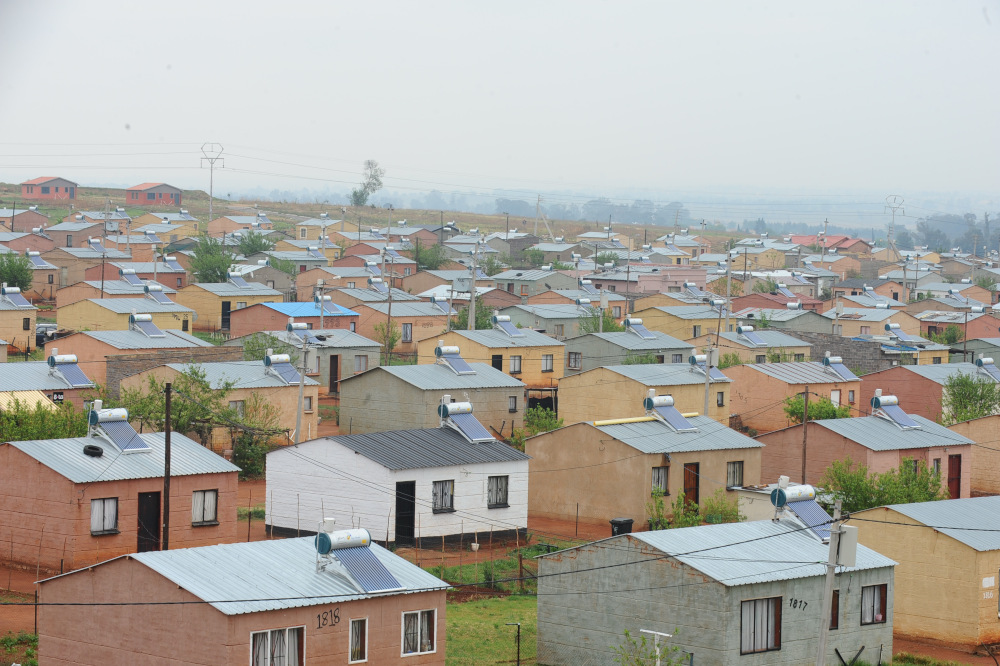 Solar water geysers in Lehae, Johannesburg
Solar water geysers in Lehae, Johannesburg
Solar Water Heaters
The City is engaged in a study, in partnership with the University of Johannesburg (UJ), C40 Cities and Climate Leadership Group to assesses the numbers of photovoltaic systems (PV) and solar water heaters (SWH) that are deployed within the City of Joburg geographic area. The Vice-Chancellor of University of Johannesburg Professor Tshilidzi Marwala recognised this project as ground breaking, in that it uses Artificial intelligence (AI) superimposed on a GIS system to determine, recognise and count SWH and PVs installed in the City of Johannesburg, and also confirms of these PVs and SWH installed, how many are correctly oriented for maximum efficiency and how many are still in working order. The system will generate data that will be used for policy development for this and similar projects to be executed by the City in future.
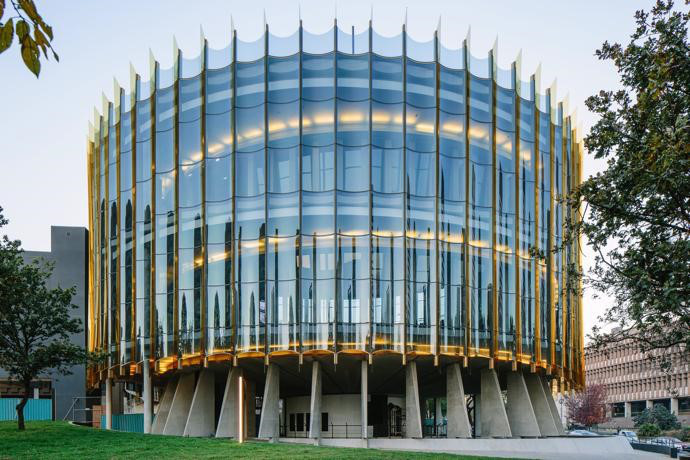 Green star rated City of Johannesburg Mayoral Chamber
Green star rated City of Johannesburg Mayoral Chamber
Maximizing energy efficiency in buildings
City of Johannesburg Council Chamber – Council Chamber
The City has developed a Green Building Policy that is out for public comments to accelerate green buildings in the city. The Council chamber is one of the City’s important landmarks, where the City is displaying exemplary leadership in energy efficiency buildings. The building has been awarded a Green Star rating by the Green Building Council of South Africa (GBSA). Sustainable features of this building include the following interventions:
An underfloor displacement system with Co2 sensors to measure the quality of air in the building;
The glass façade allows for natural light and views of the outdoors. Efficiency lighting together with occupancy sensors reduce the energy required for the occupants of the building;
All energy and water systems are metered;
A large proportion of products are locally manufactured, thereby supporting the local economy; and
The project focused on creating job opportunities for priority groups such as the youth and women, ensuring that a Training and Development structure was in place to increase the technical skills of employees.
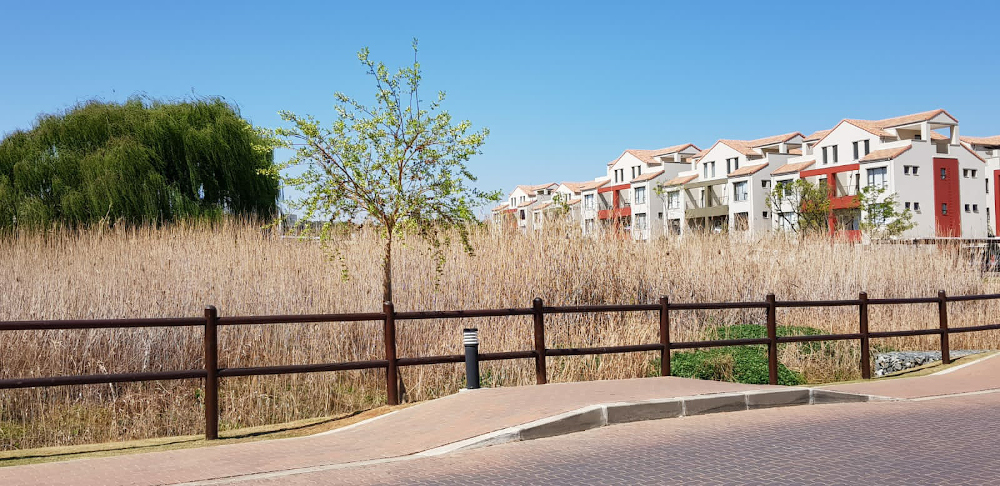 Cedar lofts wetland conservation project in Fourways, Johannesburg
Cedar lofts wetland conservation project in Fourways, Johannesburg
Resilient city infrastructure
Cedar Lofts urban wetland conservation
Cedar lofts development in Fourways is an estate with 425 residential units, situated on four hectares of natural wetland, known as the Witkoppen wetland. The site is located within a rapidly developing node, established around the intersection of some major transportation routes. The node has some major commercial and retail developments surrounded by dense residential estates, which has substantially altered the drainage patterns and placed considerable stress on the downstream catchment. The condition of the wetland was deteriorating rapidly with diminishing biodiversity and habitat.
The site was also subject to uncontrolled stormwater and runoff from surrounding development while downstream areas were also experiencing flooding. Loss of the wetland would have exacerbated flooding hazards for properties below the wetland site.
The design approach to the development of the site came about as a result of some fortuitous regulatory conditions which were imposed through the development approval process. The wetland study found that the wetland area occupied a substantial portion of the site, which together with the required wetland buffers threatened the feasibility of a development on the site.
The City was faced with refusing any development on the site which would then remain vulnerable to ongoing degradation and urban management problems, or considering relaxation of certain policy provisions.
Ultimately a concession was granted whereby the requirement for physical wetland buffers could be waived provided that the developer could ensure the sustainability of the core wetland by mimicking the natural hydrology of the site and the surface and sub-surface water flows upon which the wetland depended.
A subsequent hydrological study found that the stormwater volumes being discharged onto the wetland site were so onerous that the wetland would suffer channelization and erosion over time with ultimate loss of wetland functionality
Development of Cedar Lofts began in 2014. The design that was finally implemented on site actually improved considerably on the initial proposal, and ultimately managed to conserve a large portion of the original wetland without any major disturbance or excavation.
This came about as a result of collaborative problem solving between members of the professional team together with the site contractor and landscaper, supported by a developer who allocated sufficient resources to enable the professional team to engage and find innovative solutions to problems encountered.
One example is the decision to raise the ground level of the developable parts of the site, in order to achieve the required attenuation or storage capacity within the wetland area itself, rather than having to undertake costly excavation and invasive re-engineering. This not only resulted in conservation of a substantial component of the wetland in its natural state, but also brought about huge cost savings in reduced earthworks.
The design also incorporated a simple litter trap which can be cleared manually and serves to remove some of the pollution inherited by the site from surrounding developments.
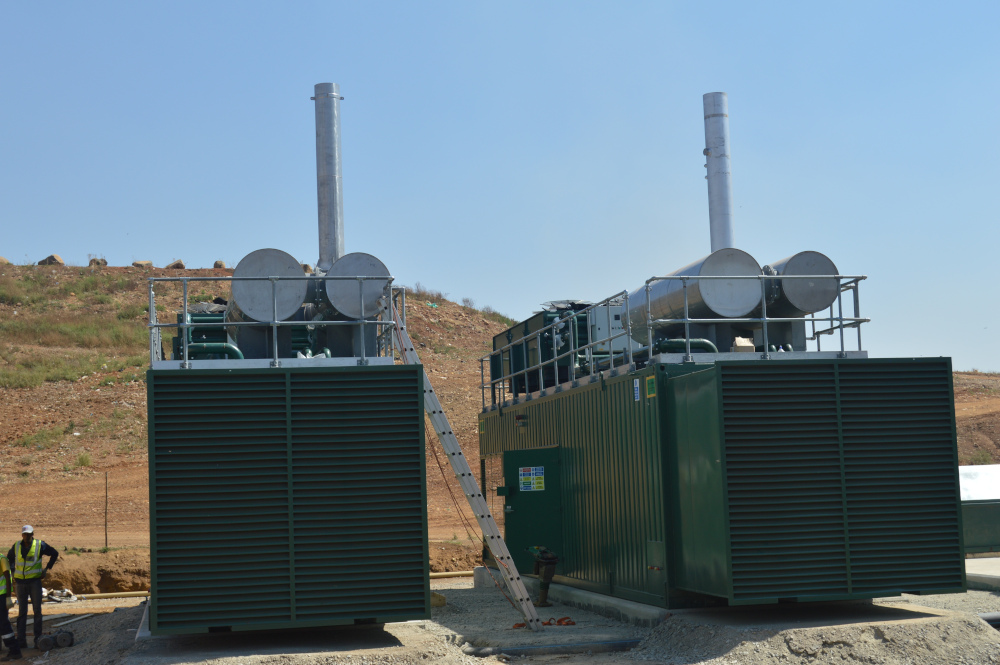 Robinson Deep landfill gas to energy project in Johannesburg
Robinson Deep landfill gas to energy project in Johannesburg
Landfill gas to energy project
The City is implementing the landfill gas to energy project at Robinson Deep, Marie Louise, Linbro Park, Goudkoppies and Ennerdale landfills to implement a landfill gas to energy Clean Development Mechanism (CDM) project. Through the implementation of a CDM project, the City will contribute to the country’s achievement of the Kyoto Protocol commitments and simultaneously generate revenue through the sale of Certified Emission Reductions (CERs) and the sale of electricity generated from the project.
The CoJ’s Infrastructure and Services Department initiated the landfill gas-to-energy CDM project in 2007. The main aim of the project is to mitigate the harmful greenhouse gases (GHG) emitted from the landfills. It is anticipated that the renewable energy generated from the project will be fed into the municipal grid, thus off-setting largely coal-derived electricity.
The project is therefore in support of Government’s 2002 agreement to the Kyoto Protocol on under the United Nations Convention on Climate
Change (UNFCCC), which aims to reduce the amount of GHG emitted in countries and the implementation of supportive CDMs in Third World countries. The project is also in support of the City’s GDS 2040 outcome of shifting to a low carbon economy. Approximately 19MW of electricity will be generated from the project, generating electricity for approximately 12 500 middle-income households.
In May 2009 the City entered into an agreement/contract with Ener-G Systems Joburg (Pty) Ltd to construct and operate the landfill gas to energy CDM project at no cost to the City for a period of 20 years. The agreement also gave Ener-G Systems exclusive rights to mine gas and generate electricity at the five landfill sites.
Progress to Date
Construction is complete on three sites (Robinson Deep, Marie Louise and Goudkoppies) with the following generation MWh:
Robinson Deep – 4.4MWh
Marie Louise – 1.2MWh
Goudkoppies ¬– less than 1MWh
The total tonnages of GHG emissions reduced from the three landfill sites combined for the period July-September is 2 262 tonnes, resulting in an average percentage of GHG offset being 16%.
Energy Efficiency at Wastewater Treatment Works
The City is currently auditing two wastewater treatment plants, namely Olivantsvlei and Ennerdale, both located in the South of Johannesburg. These wastewater works are assessed with the purpose of replacing inefficient energy consuming components with more energy efficient options. The aim of the project is to help reduce the energy consumption. The project will be implemented with the support of the DMRE.support for the retrofitting of lights along various A2 and A3 roads, namely Corlette Drive, J Swart, the Motsoaledi Nancefield corridor.
Waste recycling
The City of Johannesburg is playing a leadership role in managing waste through recycling. Recycling is a growing industry in the country and has the potential to reduce unemployment. In the last reporting period, recycling initiatives diverted about 218 000 tonnes of waste from the City’s landfills, saving over R40-millions in disposal costs.
In an effort to inculcate a culture of recycling among the residents of the City, Pikitup has introduced the Separation at Source programme. The programme encourages residents and other stakeholders to separate recyclable materials at source. Plastic bags are given to residents to ensure that the recyclable materials are placed inside the recycling bags for collection.
This programme has been made mandatory in certain residential areas in the City. Consequently, in the last financial year ending in June 2020, the following waste diversion tonnages were recorded:
Green waste diversion resulted in 70 007 tonnes being diverted from landfill sites;
Building rubble reduced by 13 232 tonnes; and
Dry waste diversion resulted in 135 385 tonnes being diverted away from landfill sites, both by Pikitup and private sector initiatives.
 Orange Farm food garden – an example of community upliftment and leadership
Orange Farm food garden – an example of community upliftment and leadership
Food security
The City of Johannesburg’s food resilience programme began in 2013. The Food Resilience Unit was developed to help food-insecure urban residents in Johannesburg’s seven regions grow their own food. The programme has achieved remarkable success in a short number of years. Today, the unit provides 37 000 homesteads, 50+ co-operatives, four farms and one urban agri-zone with an enabling environment for urban farmers to grow and sell their own food.
In addition to feeding the poorest citizens, the programme has shifted the landscape from one dominated by food-parcel donation to one of greater self-reliance. There are multiple additional benefits: access to improved nutrition and subsequent health benefits; individual self-reliance; and economic opportunities for a new breed of urban farmers in a model of urban agriculture that addresses poverty alleviation.
category: Agribusiness
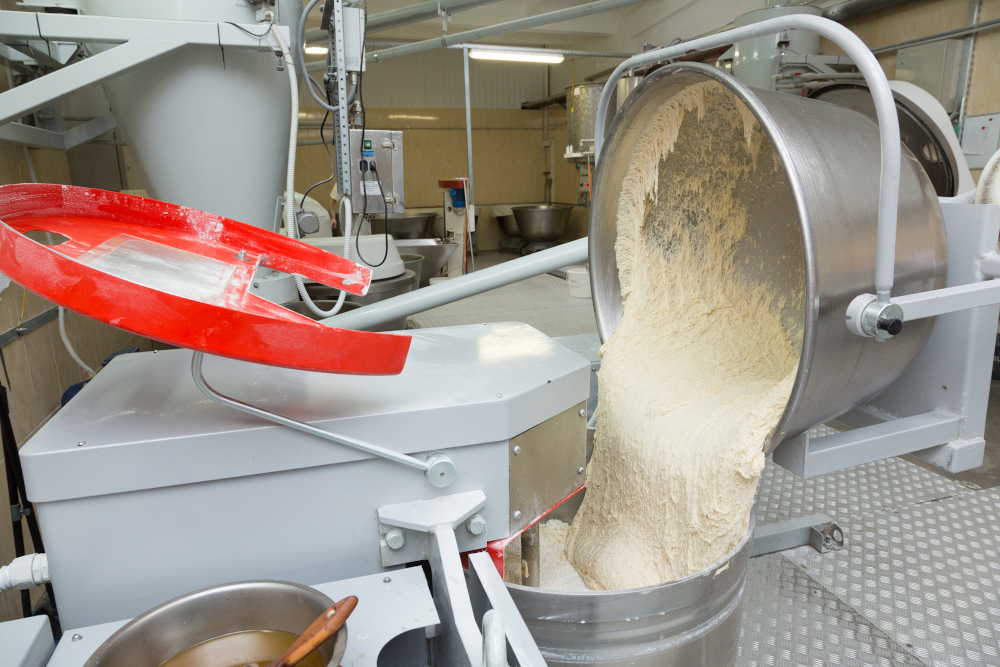
Category Winner: EnviroServ
“That old saying of we only have one Earth is so true. We cannot maintain life as human beings or the diversity of life on Earth or our ecosystems unless we embrace sustainability.”
To prove their commitment, the company has dedicated 30% of their workforce to focus on recycling and discovering alternative waste management efforts.
What started as a door-to-door waste collection service more than four decades ago has become South Africa’s largest waste management company. EnviroServ has led the way in the industry, priding themselves on innovative and sustainable solutions to the issue of dealing with waste. One of the ways in which they tackle food waste has seen the company working with SA Breweries and industrial bakeries for the past 16 years, to turn wet grain and dough that would ordinarily get dumped in a landfill into nutritional animal feed.
In 1979, there were no privately owned waste companies willing to service township areas. Local entrepreneurs noted this gap in the market and launched EnviroServ (then Wade Refuse), going door-to-door to collect and dispose of waste.
“This intrepid and pioneering spirit still informs everything we do today,” says Yolandi Kruger, project manager at EnviroServ.
The company offers a broad range of services and products for dealing with waste, such as the handling of hazardous substances, recycling and landfill management. EnviroServ takes on all of their customers’ waste needs with a zero-to-landfill approach, noting that waste management and sustainability are inseparable.
Waste is a big issue for the food industry, not only for profits, but also because of the negative effects it has on the environment. Organic waste in landfills is responsible for high methane emissions, which is why one of the government’s environmental goals is to divert this waste.
EnviroServ has two tanks on-site at SA Breweries that are filled every day with spent yeast. The company then delivers this high-protein grain and yeast mix to various farms, where the product actually increases milk production in cows and is a fraction of the cost of other fodder.
EnviroServ’s recycling team also tackles food waste in the baking industry. Bakers usually discard the first batch of dough that runs through a machine when starting on a new recipe, and also throw away batches not suitable for use. Rather than sending this dough to landfills, EnviroServ collects it directly from bakeries. The dough is then treated with other organic waste stream ingredients and becomes a nutritional livestock feed.
Not only is the company passionate about sustainable waste management, it also prioritises social responsibility, becoming the country’s only waste company to claim Level 1 BBBEE certification in 2018.
In keeping with EnviroServ’s pioneering nature, innovation is a core value. “Even if there is not a solution for a specific waste stream now, new technologies mean that we are always on the lookout,” says Kruger.
To prove their commitment, the company has dedicated 30% of their workforce to focus on recycling and discovering alternative waste management efforts.
EnviroServe currently owns and manages eleven treatment and disposal facilities, all of which were designed by top civil engineers. Their facilities are designed to treat every kind of waste material in a way that preserves the environmental balance
and in accordance with legislative standards.
“We are focused on finding beneficial uses for every waste stream that we manage and create something of value, boosting the economy by creating jobs,” says Kruger. — Andie Reeves
To learn more, visit www.enviroserv.co.za
Finalists
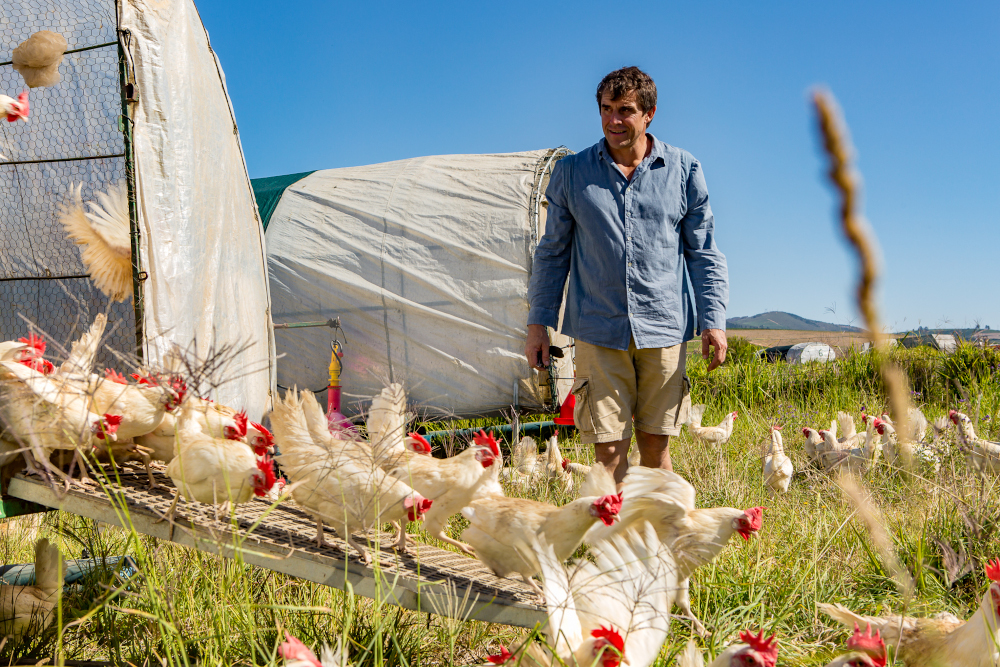
Angus McIntosh, Farmer Angus
Angus McIntosh is one of two producers of grass-fed, pasture-reared beef in the Western Cape
It was his time building clay homes that set him on this path and led to him becoming a biodynamic student, grass farmer and carbon sequestrator. He moved to Stellenbosch to farm in 2008.
McIntosh uses biodynamic, regenerative agricultural practices: sensitive pasture management focusing on short duration, high-density grazing. His butchery is nitrate-free – the only one able to make this claim in South Africa, and an impressive achievement among many firsts. His were the first burgers sold using 100% compostable packaging and, in 2013, Farmer Angus became the first in the world to sell carbon credits for decreasing the carbon contents of his pastures. He is working to remove all alien vegetation from the farm to convert into the fertiliser Biochar.
He believes his work is important because, according to the Indigo Global Wellness Index, South Africa is the unhealthiest country in the world, with significant pollution and degradation of the land. McIntosh has gone as far as to ban the word “sustainability” on his farm. saying that we’ve gone past the point of being able to sustain anything. He believes “Regeneration is what is required.” — Fatima Moosa
To learn more, visit www.farmerangus.co.za
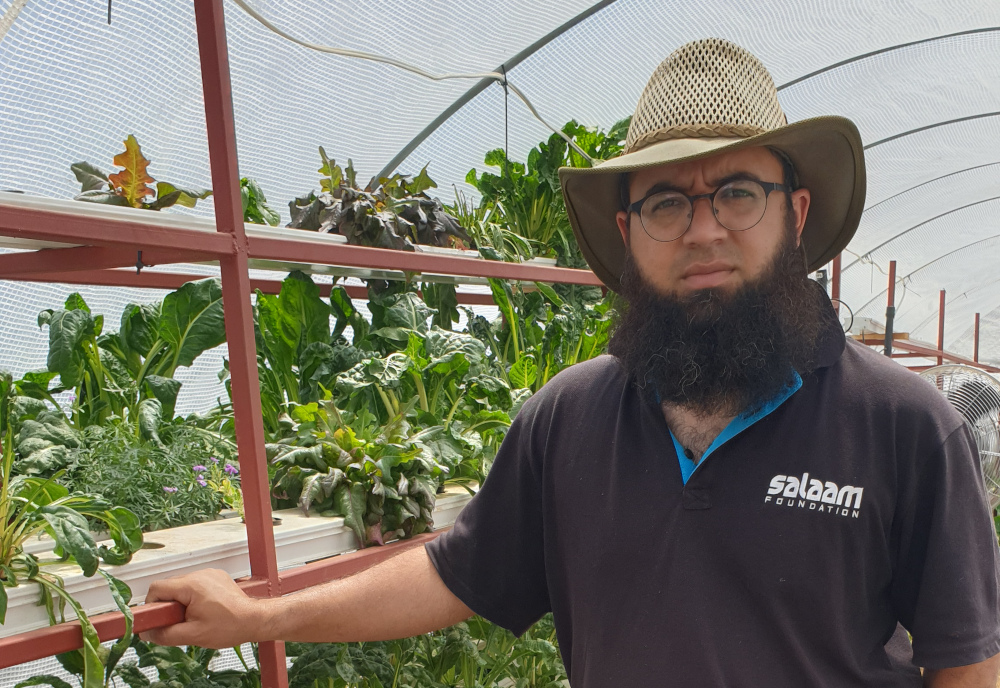
Azhar Vadi, co-founder @ Salaam Foundation and Farm in the City
When he was a journalist, Azhar Vadi was exposed to various conflict zones, natural disasters and human suffering, which inspired him to facilitate humanitarian aid projects in the regions he reported from. He co-founded Salaamedia, a humanitarian journalism portal, and the Salaam Foundation to carry out non-profit humanitarian work.
Through the Salaam Foundation, he established Farm in the City, a project that took a piece of barren land and turned it into a flourishing farm in the heart of Robertsham, Johannesburg, which provides wholesome, healthy produce for those most in need. The onset of Covid-19 forced the Salaam Foundation to look towards sustainability in its efforts to help vulnerable communities out of poverty by providing food assistance.
“Everything in life is finite, especially financial resources. However, our desire to help is infinite. We want to assist others in a sustainable way, maximising limited resources to extract maximum benefit. We started the concept of Farm in the City, an urban garden, to help produce our own food source to benefit humanity.” — Afrika Bogatsu
To learn more, visit www.salaamfoundation.com
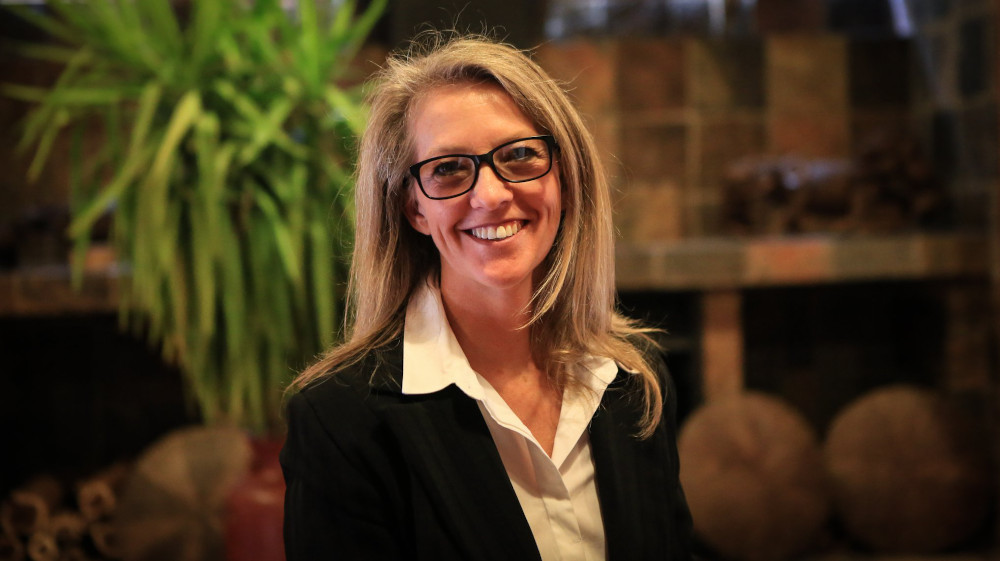
Brownyn Jones, founder and director @Bokashi Bran (Pty) Ltd
Food waste in landfills is one of the largest contributing factors to global warming, and Bronwyn Jones’ Bokashi Bran believes its composting system is the answer.
Jones grows her own vegetables and her garden has always had a compost heap. When she heard about bokashi, a composting method developed in Japan, “it seemed too good to be true that you could compost cooked food, meat products and dairy”.
After seeing the results in her garden and researching further, Jones made it her mission to introduce bokashi to South Africa.
Bokashi is a wheaten-bran that has been brewed with effective micro-organisms that ferment food that would otherwise rot.
Bokashi Bran’s home kitchen solution is simple, consisting of an air-tight bucket for food waste and a bag of bokashi, a cup of which is sprinkled over food waste daily.
Jones is developing an on-site composting machine for commercial kitchens to handle large-scale food waste efficiently. — Andie Reeves
To learn more, visit www.bokashibran.co.za

Andile Mcoyi, founder, NutriBox
“I refer to food as medicine. It’s very important that we eat healthy and nutritious food, and grow our own produce — each household should have a garden,” she says.
Andile Mcoyi operates an agribusiness that encourages people to be an active part of sustainable food production. Her love and passion for farming led her to start a small, self-sustaining garden. Her harvest was so amazing that she took pictures of her produce and posted them on her WhatsApp status. In no time, time, she received order for her spinach, green peppers and onions.
After she realised the great potential in farming and after identifying a gap in the market for women in the industry, Mcoyi decided to start farming full time, focusing on producing a variety of seedlings and growing different vegetables.
The Umthombo Farming Project offers packaged fruits, vegetables and poultry in a service called NutriBox, which delivers fresh goods to your door. Mcoyi caters to a wide range of customers. She encourages them to be healthy and sustainable in their consumption. — Shai Rama
To learn more, visit: @UmthomboNutriBox
category: Clean Air and the Quality of Life
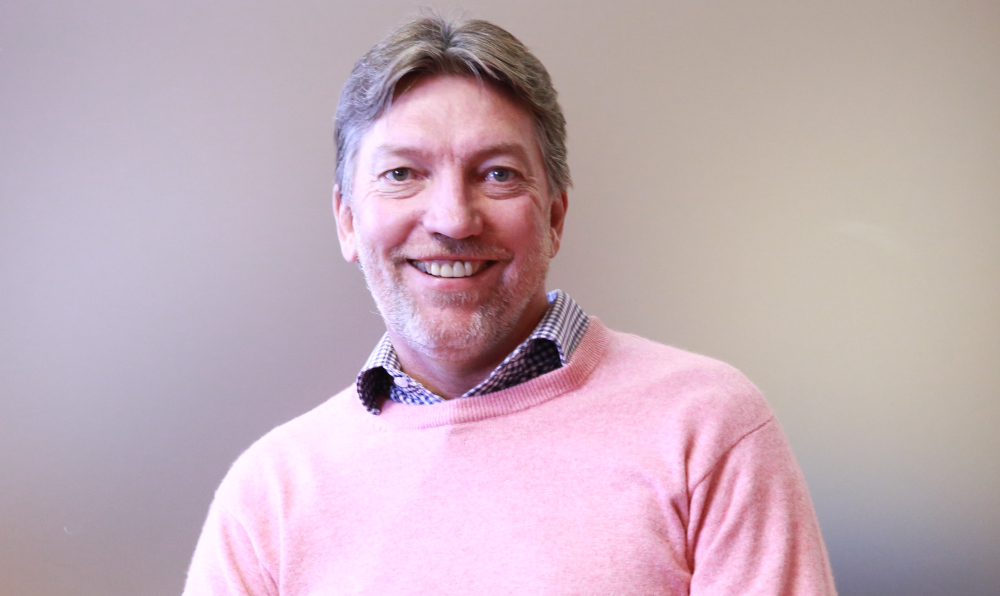
Warren Hewitt, chief executive, Greater Tygerberg Partnership, The Zero Waste Schools Project
The Zero Waste School project is a pilot project brought to life by the Greater Tygerberg Partnership (GTP), a public-private partnership that has managed to uplift and regenerate the northern suburbs in Cape Town by introducing easy recycling into the area. It consists of a system of labelled recycling bins, an on-site recycling depot, ecobrick stations and a compositing pit.
Everyone has a role to play, regardless of their status or background. As the Greater Tygerberg Partnership, we must identify opportunities to, first, educate urban populations about how it is possible to make a difference – even in their own homes or schools; and second, to lobby institutions and businesses to commit to a more sustainable way of working.
The main priority for founder Warren Hewitt and his team is to maximise partnerships and innovation to bring about the healthy development of the Greater Tygerberg area, specifically the Bellville and Parow CBDs. They want to ensure the region reaches its full potential through economic development, sustainable land use and social integration by attracting investment and building up communities.
The pilot scheme for the Zero Waste School project was implemented at a prominent local school with 100 pupils taking part. Hewitt says that within the first three months of the programme, the school had diverted 60% of its waste from landfills, with savings of about R36 000 a year.
While the GTP has many projects, including a trolley recycling scheme and street store, schools remain an important part of the vision. Hewitt says that, while mind-sets are shifting towards more sustainable practices, cities, institutions, schools and businesses still aren’t doing enough to reduce waste and better manage their resources. By focusing on schools, they are tackling the problem of waste from the ground up.
“We are also developing a toolkit that helps educators build sustainability and waste/resource management into the school curriculum, and that actively engages learners and educators in the practices required to think differently about how much waste they produce daily,” says Hewitt.
This project is all about ensuring sustainability. For Hewitt and the GTP, sustainability means a great deal. Hewitt says that healthy cities are not only about economic prosperity, they also need to better manage their resources, reduce waste sent to landfills and create healthy urban environments where people can thrive.
“To achieve this,” Hewitt says, “everyone has a role to play, regardless of their status or background. As the GTP, we must identify opportunities to, first, educate urban populations about how it is possible to make a difference – even in their own homes or schools; and second, to lobby institutions and businesses to commit to a more sustainable way of working.”
The GTP uses education as a way to drive wide-scale systemic change. Hewitt says that simply telling a school to reduce their waste will be inadequate if they don’t have the systems or knowledge to support a shift in behaviour. “The GTP is in a unique position to be innovative and connect with their communities on these issues.” — Fatima Moosa
To learn more, visit: www.gtp.org.za
Finalists
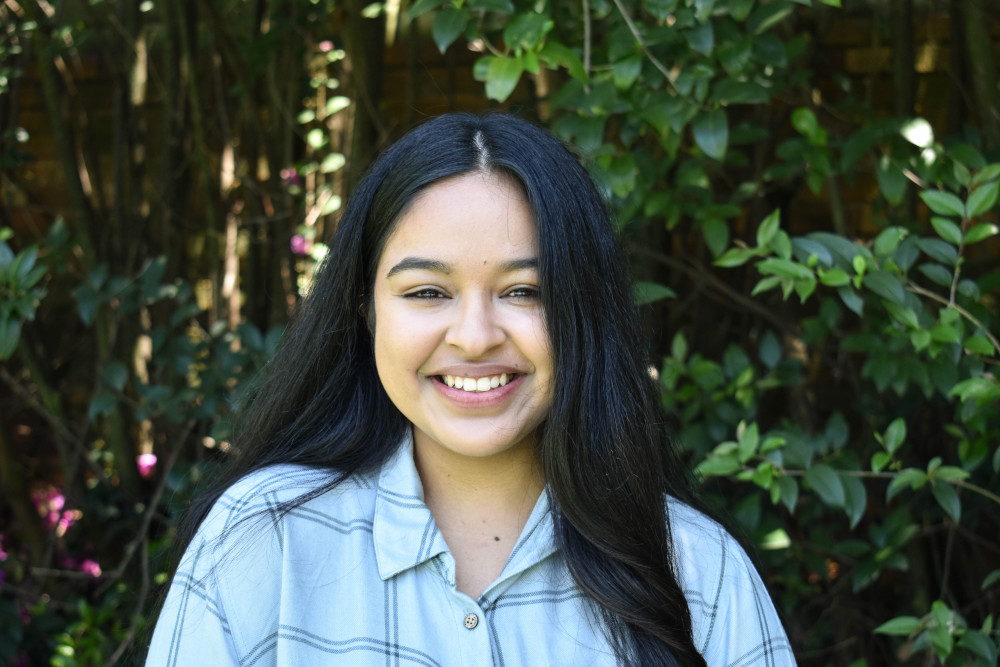
Courtney Morgan, organiser, researcher and activist, Co-operative and Policy Alternative Centre South African Food Sovereignty Campaign
“Every generation has its crisis to overcome. I truly believe the climate crisis is ours.”
Courtney Morgan is dedicated to addressing environmental and climatic issues as well as societal issues, as she believes these problems are fundamentally linked. “Do we address environmental issues first but risk not having a society to live on this earth? Or do we address the societal issues first and risk not having an earth to live on?”
She believes that this is the fundamental question of our time: “As the human race, climate change is an existential crisis, and though this means that it threatens human life as a whole, it will affect us all differently, and specifically, the poor most severely.”
Morgan has worked alongside communities, members of the media, youth, labour, faith-based organisations, and social justice organisations to develop a Climate Justice Charter for South Africa. This ambitious document outlines goals, principles and systemic alternatives to our current way of living, including community-owned renewable energy, food sovereignty and an alternative to our current economic system — one that puts people above profit. — Shai Rama
To learn more, visit www.copac.org.za

Bridgett Majola, director @ CMS South Africa
“When I was much younger, I used to pick up litter on my way to school and recycle it,” says lawyer Bridgett Majola. “Anyone at any level can contribute to sustainability. It draws on politics, economics, philosophy and other sectors.”
Specialising in project finance for construction, operation and maintenance of renewable energy generation facilities in South Africa in terms of the government’s Renewable Energy Independent Power Producer Procurement Programme, Majola conducts legal due diligence and provides advice to buyers interested in renewable energy projects.
“My team and I work closely with people who are actively funding renewable energy projects, from biomass projects to solar photovoltaic, wind and concentrated solar,” she explains.
Majola has used her experience in corporate and commercial legal work to develop guidelines for government, developers and lenders to roll out sustainable alternative energy projects. — Afrika Bogatsu
To learn more, visit: @presbrie
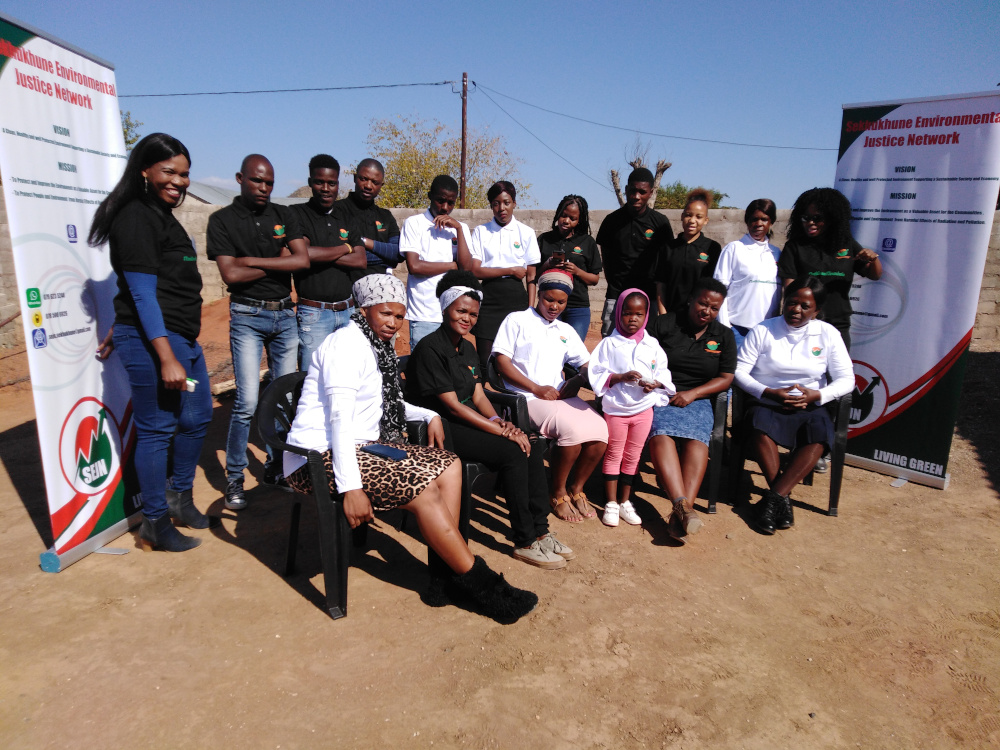
Sekhukhune Environmental Justice Network, non-profit organisation
The process of mining has devastating effects on the environment and human lives. In the heart of the platinum mining belt of South Africa, the Sekhukhune Environmental Justice Network (SEJN) is a nonprofit organisation seeking justice for mining-affected communities.
The people of Sekhukhune have long relied on agriculture for their livelihoods. When minerals were discovered on the land, mining companies descended and, according to Mmathepelo Thobejane, one of the founders of SEJN, “everything changed”.
Indigenous trees were cleared, livestock lost pastures, and drinking water was contaminated. Thobejane recognised the need for an organisation to give voice to disenfranchised locals. In 2016, along with other leaders in the community, she launched SEJN.
The organisation seeks compensation and justice for people affected by mining. It promotes environmental education through events such as fun walks, school talks and discussions. They’ve planted more than 1 000 indigenous trees in the area. — Andie Reeves
To learn more, visit Sekhukhune Environmental Justice Network on Facebook
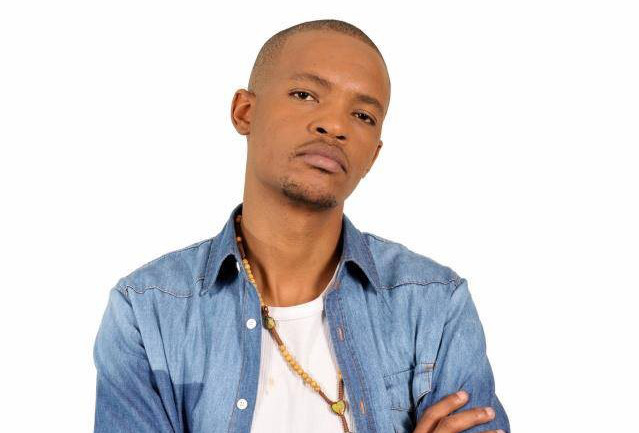
Mohau Kwebu, founder and director, MOYDAF (Mafube Online Youth in Dance and Arts Festival)
“With the scare of Covid-19 still lingering, we need green spaces where we can raise the hope of the community and ultimately the hope of the country.”
Mohau Kwebu is the founder and director of Moydaf (Mafube Online Youth in Dance and Arts Festival), a non-profit organisation in the Free State. In partnership with the Mafube municipality, he creates positive social cohesion programmes aimed at uplifting township communities by greening abandoned spaces. “We plant trees and turn unused municipal buildings into safe green spaces of hope for communities,” Kwebu says. The secret to their success is to find smart ways to recycle: “I approach sustainability through my passion for sports, arts and culture. We turn unused buildings, which are currently used as drug dens, into safe, green spaces.”
He believes that the organisation’s work is important in the Free State, where 90% of municipalities are under administration. “The Free State might be the agricultural hub of the country, but its townships are under-developed,” he says. Kwebu’s organisation is focused on sustainable farming. “Mafube is an agricultural municipality with an interest in both animal and plant farming. Moydaf has expressed interest in these projects.” He says that the first step — identifying land and partnering with the municipality — has been successful. — Nicolene de Wee
To learn more, visit MOYDAF on Facebook
category: Forests
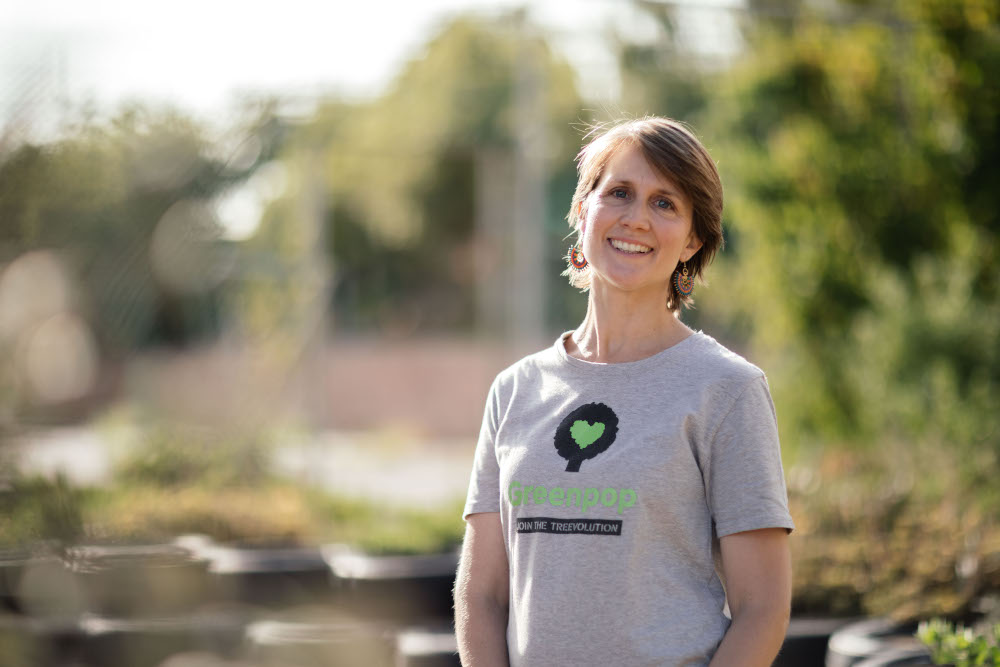
Category winner: Lauren Teasdale, co-founder and managing director, Greenpop
For decades Mathabo Kunene has been building South Africa, one business and foundation at a time.
It’s time to move from our culture of extraction to a new culture of restoration – for the sake of our children and all life on Earth.
One of the most rapidly urbanising continents, the ecosystems of Africa are becoming ever more threatened. To Lauren Teasdale, co-founder and managing director of Greenpop, it is imperative that natural spaces are protected and that development takes place with nature as a top priority.
While she was working as a writer, Teasdale and her partner, Misha, had the idea for a small project that would one day become Greenpop.
“Misha, a group of friends and I wanted to plant 1 000 trees to compensate for the travel footprint of a trip Misha had recently done, and also because we all had environmental footprints and had never done anything about it,” says Teasdale.
They pledged to plant 1 000 trees in one month and, as the writer in the group, Lauren was tasked with all the communications for the project.
“I learned so much in that time: why, where and how to plant trees, what people in South Africa thought about trees, and how we could grow a culture of planting trees and, ultimately, hope.”
Once this initial, month-long project had come to an end, it felt natural for the couple and a friend, Jenny, to continue growing Greenpop. Ten years later, they have planted more than 130 000 trees. Greenpop has also hosted 572 sustainable development workshops, planted seven fynbos biodiversity gardens, and painted 20 conservation and nature-themed murals.
“I call Greenpop my first child because Misha and I started the organisation together,” says Teasdale. “It sometimes feels like we’ve birthed a child who teaches us so many lessons, thrills us and challenges us every day. I’m very blessed to say that I love what I do and I believe that restoration work is critically important.”
The philosophy of Greenpop takes into account South Africa’s unique socio-political context.
“South Africa is one of the most unequal societies in the world,” says Teasdale. “Green space and valuable ecosystem services should be equally accessible to everyone. Unfortunately, the most vulnerable communities often lose access to these services first.”
Motivated by the recent devastating drought in the Western Cape, which peaked in 2018, Greenpop realised the need to prioritise restoring the Cape’s fynbos ecosystems. Their Fynbos for the Future programme plants water-wise fynbos gardens in under-greened schools in the Cape Flats. Besides the biodiversity these gardens bring, they also create opportunities for learning and inspire community members to take an active interest in the environment.
The company’s Forests for Life programme has an ambitious goal: to plant 500 000 trees by 2025. Their aim is to restore degraded forest areas, increase biodiversity and expand ecosystem services across sub-Saharan Africa.
“In addition to putting trees in the ground, we reduce threats to restored areas by providing locally relevant support services, including alien clearing, wood lot development and alternative livelihoods training, to ensure the sustainable management of our forests,” says Teasdale.
In collaboration with The Big Food Drive and Urban Harvest, Greenpop is also launching a food accessibility project. The project will start by creating a large community food garden in Cape Town’s Masiphumelele township in 2021, with the aim to spread the project further into the future.
To Greenpop, sustainability is not just about planting trees, but needs to be approached with a more holistic understanding.
“We need to think about sustainability in everything we do – how we live, what we buy, what we eat, what we wear, how we travel,” says Teasdale. “Our planet’s resources are finite. Sustainability has to be a top priority for everyone in everything we do.” — Andie Reeves
Finalists
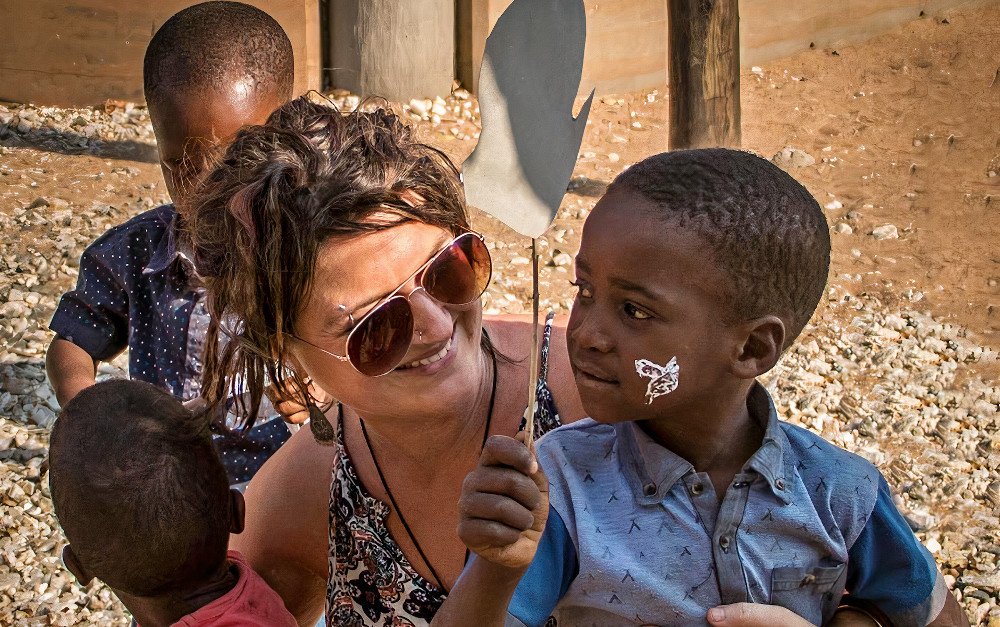
Sarah Bergs, founder and chief executive @ Nourish NPO
Just 30km outside of the Kruger National Park lies Nourish, an eco-village that has been bridging the gap between impoverished South Africans and the tourism industry for 10 years.
Having grown up in the area, Sarah Bergs, chief executive of Nourish, has always had a deep love of nature. From a young age, Bergs was disturbed by the imbalances between wealthy tourists able to enjoy South Africa’s natural beauty and impoverished locals. “I wanted to find a way to make conservation and tourism more inclusive for marginalised wildlife communities,” says Bergs. “Nourish was born to create a space where communities could gain access to support, empowerment and upliftment.”
She approached the chief of Sigagule village and shared her concept: to reconnect the community to local wildlife, to educate children about nature and conservation, and to create ways in which villagers could begin to benefit from the tourism industry. Nourish now has a 99-year lease on a hectare of land.
“We are becoming a duplicable wildlife buffer zone community development model that brings about change in conservation in a sustainable way through inclusive tourism and enterprise,” says Bergs. — Andie Reeves
To learn more, visit www.nourishecovillage.com
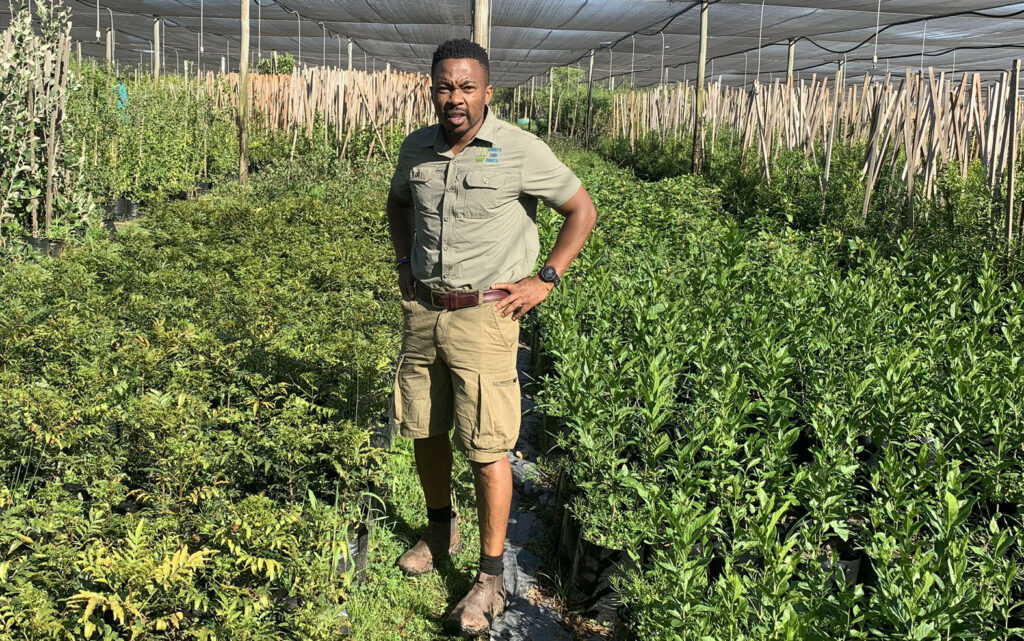
Siyabulela Sokoman, co-founder, Township Farmers and Nguni Nursery
Township Farmers is a non-profit organisation trying to re-green the townships of Cape Town, one tree at a time. As well as slowly transforming the dusty, dry land, Township Farmers also focuses on food security and environmental awareness.
Growing up in Khayelitsha, Siyabulela Sokomani remembers a childhood without any trees around him. In Grade 10, he joined his school’s Environmental Club, where he was “bitten by the green bug”. After school, he studied horticulture.
In 2016, he co-founded Township Farmers with Ondela Manjezi. “We saw a need in our community for small-scale organic farms at early childhood development centres and orphanages,” says Sokomani.
Together with SouthSouthNorth, Township Farmers recently started to develop food gardens. After identifying keen back yard gardeners in the Kuyasa area, Township Farmers has provided them with training and support to then start growing their own food.— Andie Reeves
To learn more, visit: @TownshipFarmers
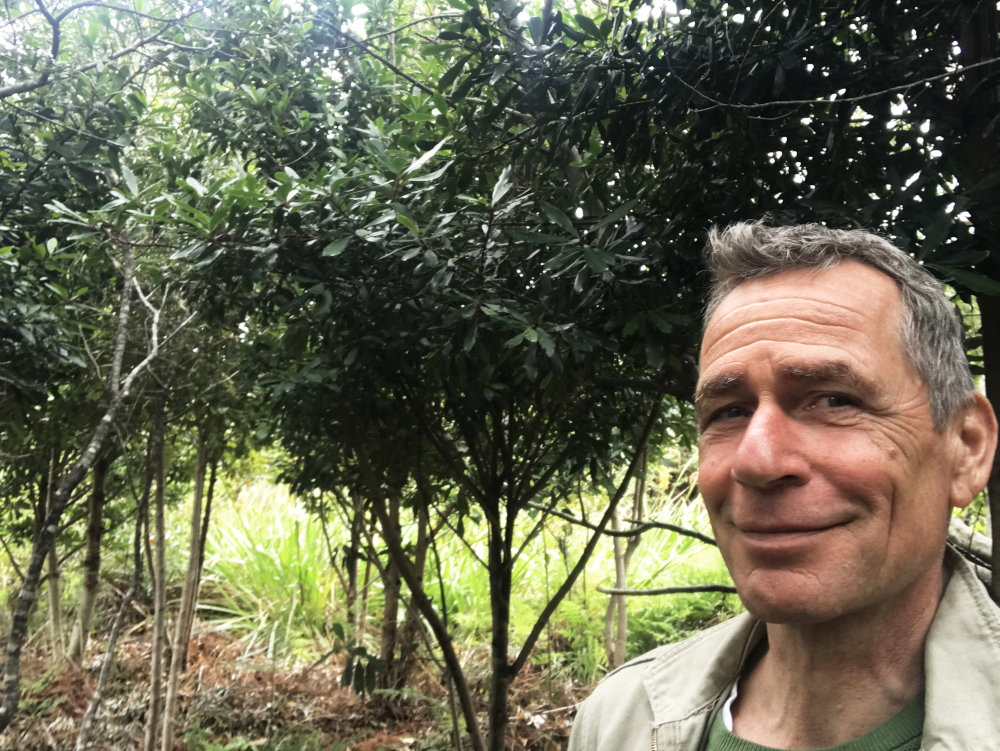
The South African Reforestation Trust
Maarten Groos, director
“When you consider South Africa’s many mono-culture tree plantations and alien invasive trees, we need to remember that a tree is not simply a tree,” says the director of the South African Reforestation Trust, Maarten Groos. “Natural and native ecosystems and their biodiversity hold the key to life on this planet. On top of that, natural and diverse forests sequester more carbon dioxide than mono-culture plantations or agroforestry, which means they’re much more efficient in combating climate change.”
The South African Reforestation Trust started 10 years ago with the aim to create and expand pristine indigenous forest ecosystems. Initial pilot projects were set up to learn how afforestation and reforestation could assist in the rehabilitation of areas that had been cleared of alien invasive vegetation. A decade on, indigenous forests have flourished on what was once scarred and burnt land.
SAReforest is a co-operative platform and multiparty network that takes an area-by-area approach to reforestation. To date, they have planted more than 18 000 trees at six reforestation sites. — Rosie Goddard
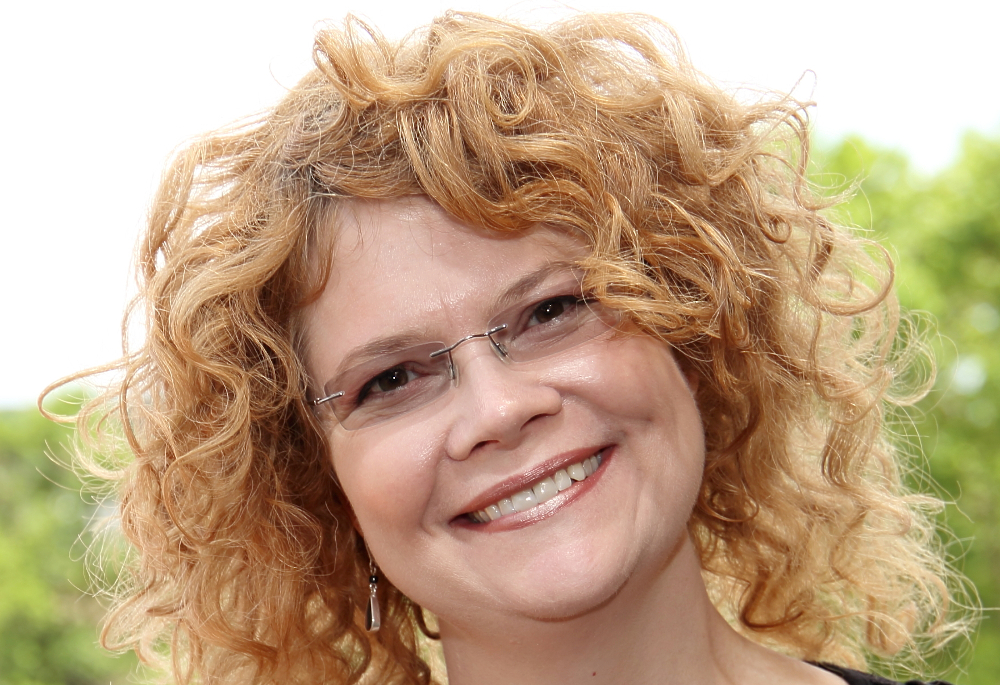
Zeldeen Muller, chief executive @ AgendaWorx
“Many South Africans appear to have a very apathetic attitude towards sustainability. This attitude of climate nihilism is just as dangerous as a total denial of climate change. We all have to do our part for the sake of our long-term survival as a species.”
InSite Innovative Education’s flagship product, AgendaWorx, provides digital solutions to help businesses save money and the environment.
While working as a consultant at a retirement fund, Zeldeen Muller noticed how much paper was being wasted. “I spent many nights preparing, printing and binding agendas,” says Muller. “Some of these included 100 to 250 printed A4 pages. With 15 to 20 attendees per meeting, it was a lot of wasted effort and paper.”
InSite Innovative Education Solutions went 100% virtual a few years after its 2007 inception. “It was essential for us to leave as small a carbon footprint as possible,” says Muller. “The challenge was how to assist our clients to do the same.”
Using AgendaWorx, businesses can create and distribute interactive agendas virtually, securely and quickly. — Andie Reeves
To learn more, visit: www.agendaworx.com
category: Oceans and waterways
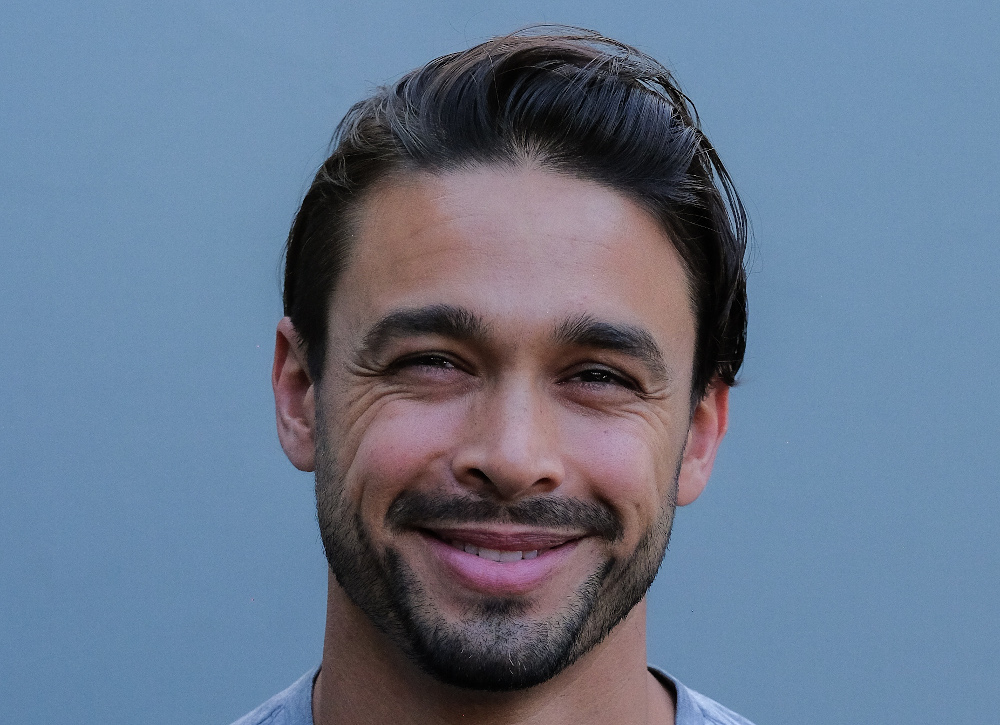
Category Winner: Samir Randera-Rees, programmes manager @ Water Source Areas at WWF-SA
Samir Randera-Rees’s passion for nature kicked in when he was growing up in Johannesburg. “My garden was my playground, and my parents would show me nature documentaries and take us on occasional trips to the bush. This exposure piqued an interest in my young mind that would remain with me for the rest of my life,” he says.
I believe in the need for all people to live with dignity. For me, the continued existence of nature is inseparable from the fight for dignity, and environmental degradation is intrinsically linked to the degradation of livelihoods. Fighting for environmental sustainability is also my contribution towards the fight for dignity for all people.
When I started university I wasn’t planning on going into the environmental field. I saw my interest in nature as more a hobby than a vocation, but in my first environmental science elective class, the crushing weight of the scale of environmental destruction came down on me, and I realised that if people who have a passion for nature do not dedicate their lives to protecting it, then nature doesn’t stand a chance.”
From that moment on, Randera-Rees was dedicated to gaining the knowledge and skills needed to make a positive impact on the environmental struggle.
After completing a degree in Environmental Science and Economics at UCT, followed by several game ranger courses, he completed a Master’s in Conservation Ecology.
In 2014, Randera-Rees developed a mobile app called Whispers of the Wild, an audio-visual digital game ranger that enriches the experience of safari tourists, giving them a heightened appreciation of nature and conservation. He also completed a stint in TV, presenting on the acclaimed documentary show 50/50, and working on the documentary series Keeping up with the Kruger.
“I believe in the need for all people to live with dignity. For me, the continued existence of nature is inseparable from the fight for dignity, and environmental degradation is intrinsically linked to the degradation of livelihoods. Fighting for environmental sustainability is also my contribution towards the fight for dignity for all people.”
Randera-Rees volunteered to manage a project for the WWF Freshwater Programme in the Outeniqua Mountains and then a position opened up in the Freshwater Programme. He was appointed programme manager of the Water Source Areas programme in 2017 and has since been dedicated to improving the protection and management of important landscapes in South Africa.
Randera-Rees’s work is focused on protecting the Strategic Water Source Areas, which supply 50% of South Africa’s water and are vital to economic, food and energy security. South Africa is a water-scarce country, and he explains what this means: “It means that we are currently at the edge of our water supply right now. Demand for water will outstrip supply by 17% by 2030. We are facing a changing climate where our water supply is likely to become more erratic, and that means we need to take actions to respect and protect water at every point along the water supply chain, starting with protecting our water at its source and prioritising the ecosystems that capture, store, clean and release our water.”
The WWF’s goal is to improve the management and protection of the Strategic Water Source Areas, by halting degradation and restoring and rehabilitating already degraded ecosystems back to a functional state in order to avoid future crisis situations.
“This is why we have developed a concept called Water Source Partnerships, which brings together the relevant government entities, community members, private sector partners and nongovernmental organisations to jointly govern the water resources in the Water Source Areas. The partnerships will become the vehicle for environmental interventions in these areas. We have started several Water Source Partnerships in the Western and Eastern Cape, and our goal is to develop Water Source Partnerships in eleven Strategic Water Source Areas by 2025.” — Afrika Bogatsu
Finalists
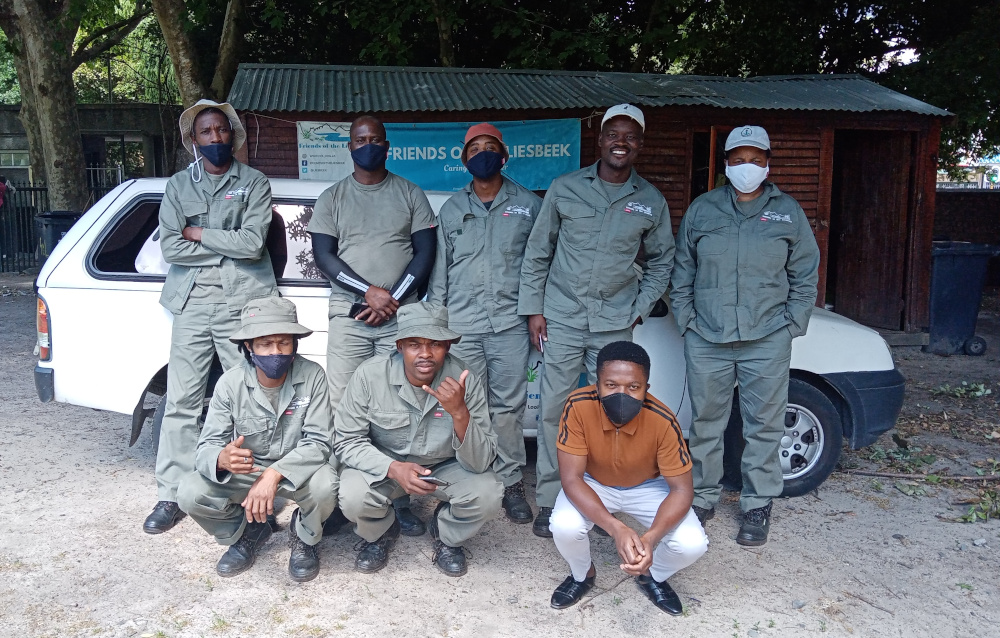
Sabelo Memani, LMP project manager @ Friends of the Liesbeek
The Friends of the Liesbeek is a non-profit organisation working tirelessly to preserve the environs of the Cape’s Liesbeek River. Founded in the early 90s by resident volunteers, FoL looks after the river, which runs through mixed-use urban areas.
The FoL team performs river clean-ups and alien species control, as well as leading environmental awareness outreach programmes and the development of the Liesbeek River Life Plan, a roadmap to rehabilitate the river.
Sabelo Memani, Liesbeek Maintenance Project’s project manager, explains that urban rivers and their environs play a crucial role in climate-change mitigation and adaptation, and the health of the people located along it. With the employment of permanent workers by LMP, the Liesbeek River’s condition continues to improve and is being maintained as one of the best examples of an urban river project in South Africa. Memani explains that the Covid-19 pandemic has threatened their business model, which relies on funding, much of which has been lost owing to the financial pressures of lockdown.
The support FoL provides the local City of Cape Town is critical. FoL plans to offer skills development and training opportunities to people from previously disadvantaged communities. — Fatima Moosa
To learn more, visit @friendsof_theliesbeek
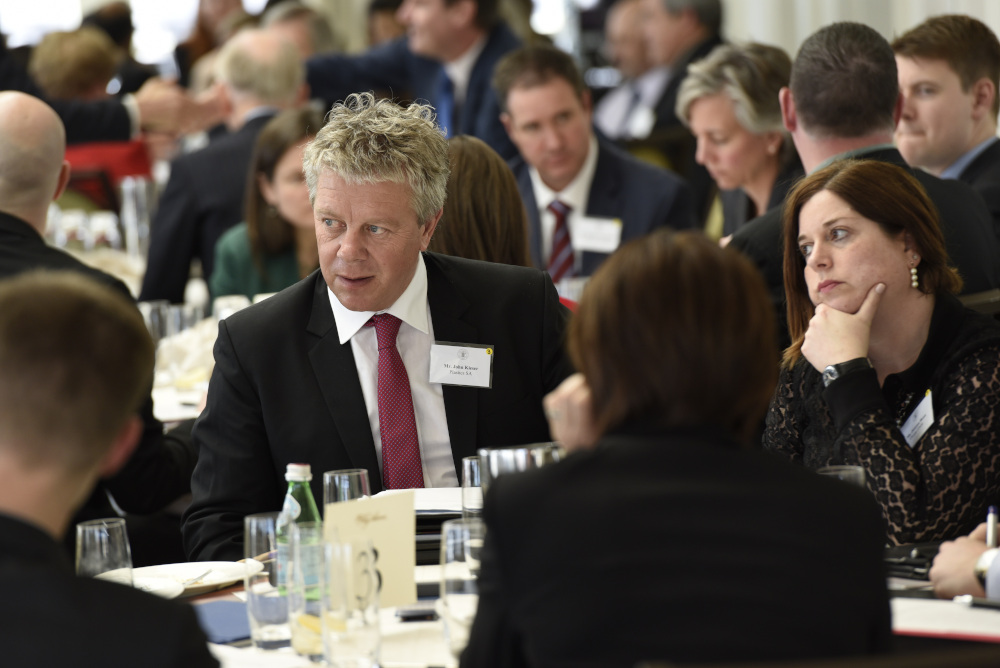
John Kieser, sustainability manager @ Plastics SA
“Sustainability is just another word for conservation, and conservation has always been mistaken for preservation. We do not protect just to ensure an aesthetically pleasing South Africa, but also so that we as humans live in harmony with our environment, not to the detriment of it.”
Many consider plastic to be one of the natural environment’s biggest enemies, but John Kieser, sustainability manager at Plastics SA, is passionate about creating an environment where the natural world and man-made technology can coexist.
His interest in marine life and pollution started when the government appointed him as a fisheries inspector. He noticed that there was a lack of experiential training in the world of conservation: “Most of the environmental educators focusing on the marine and coastal area were very knowledgeable, but lacked experience in the field.”
The sustainability section of Plastics SA leads a number of environmental projects: beach clean-ups, providing bins for fishing lines at angling spots, and Operation Clean Sweep, aimed at keeping plastic pellets out of the natural environment. — Andie Reeves
To learn more, visit: www.plasticsinfo.co.za

Aaniyah Omardien, founder and director @ The Beach Co-op
“I fell in love with the ocean as a young girl in Cape Town, where the mountains meet the sea. This connection to blue and green spaces motivated me to study geography and atmospheric science at the University of Cape Town.”
Aaniyah Omardien is the founder and director of The Beach Co-op, an organisation focusing on building an ocean-loving culture in Cape Town.
The Beach Co-op is involved in beach clean-ups, and works collaboratively with ocean communities and other role players to protect and restore ocean ecosystems.
Omardien believes that sustainability and environmentalism go hand-in-hand: “I have struggled being labelled an environmentalist, because it did not capture the social justice and human rights issues that I feel are marginalised in traditional conservation and sustainability/environmental practices.”
Omardien says that the marginalised are the most threatened by the effects of climate change, but are often side-lined from the sustainability conversation. — Nicolene de Wee
To learn more, visit: www.thebeachcoop.org
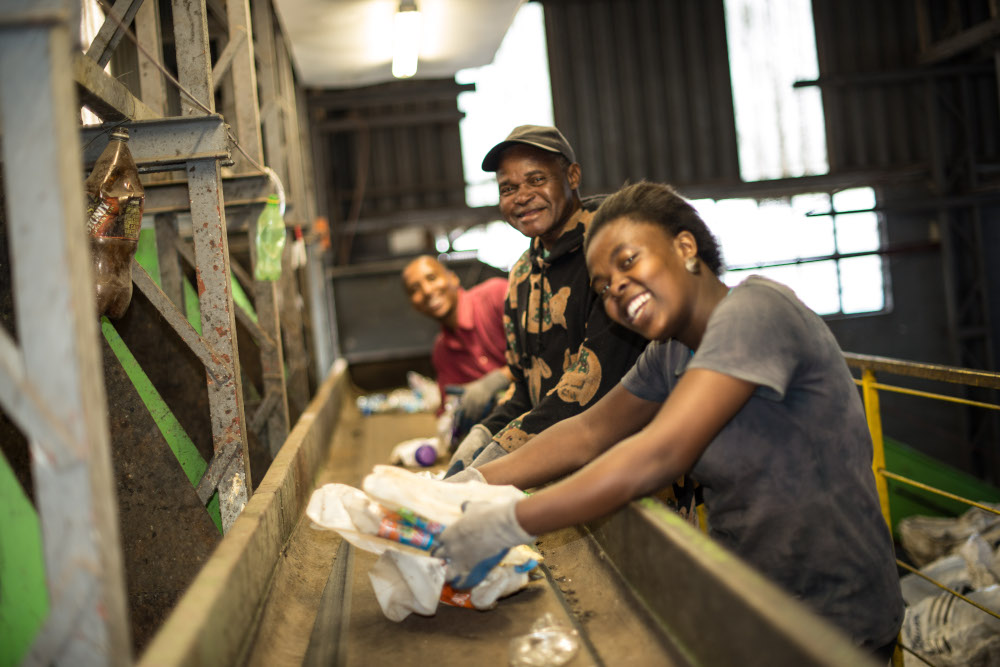
PETCO, PET Recycling Company
Through PETCO and its members, 5.9 million bottles were collected for recycling every day in 2019, to keep them out of the environment and ocean where they do not belong.
“PET” is the acronym for a versatile, sophisticated plastic called Polyethylene Terephthalate, which is used to make the most common container in the soft drink market today: the plastic bottle. PET is globally recognised as a safe, recyclable packaging material for food and non-food products. It is used for a wide variety of applications because it is safe, strong, shatterproof and chemically 100% recyclable into various PET products (such as fibre for duvets and pillows) and bottles, when basic design principles are followed.
Although the PET plastics industry acknowledges the convenience and life-saving qualities of plastics, a solution for post-consumer plastic packaging is critical in order to minimise its impact on the environment. PETCO views itself as a catalyst of design for recycling innovation, preserving the value of existing resources and utilising recycled PET in more and more applications.
The company raises awareness for the plastic pollution crisis by its involvement in various ocean-conscious events, such as, the African Marine Network conference and educating the public on the need for a circular economy. — Shai Rama
To learn more, visit: www.petco.co.za
category: Sustainable Design
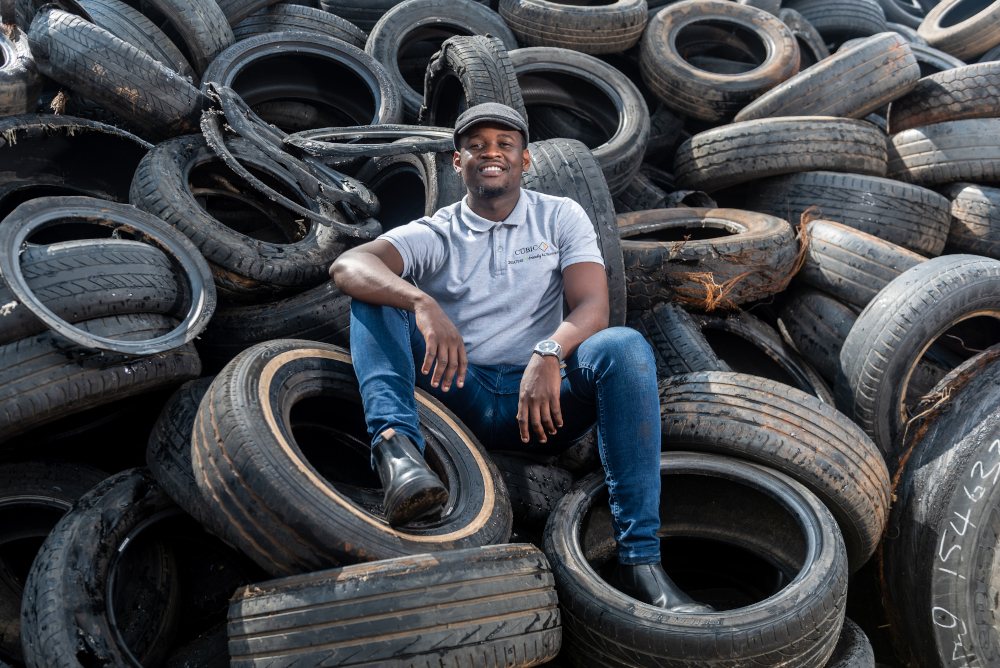
Category Winner: Mzokhona Maxase, co-founder, Cubic 38
For decades Mathabo Kunene has been building South Africa one business and foundation at a time.
Living in Gauteng was a huge surprise to me. Valuable materials which could be upcycled into income-generating raw materials were treated and labelled as waste materials. This led us to investigate the waste tyre ecosystem, which had huge challenges and very few proven upcycling avenues in South Africa.
Cubic 38 was formed in a small garage by two students from the Tshwane University of Technology, Mzokhona Maxase and Tshepo Sithole. Their mission was to create quality and affordable products for daily use from non-conventional sources such as waste tyres or processed rubber.
Eleven million waste tyres have accumulated in South African landfills over the years, while other tyres are resold or illegally dumped in open spaces. When burnt for heat or used as a fuel source, waste tyres release harmful greenhouse gases and toxic fumes into the environment.
When he moved to Gauteng from Hluhluwe, a rural area in KwaZulu-Natal, where there is minimal waste and communities live hand-in-hand with the environment, Mzokhona was surprised at the amount of waste he saw.
“Living in Gauteng was a huge surprise to me. Valuable materials which could be upcycled into income-generating raw materials were treated and labelled as waste materials. This led us to investigate the waste tyre ecosystem, which had huge challenges and very few proven upcycling avenues in South Africa.”
Mzokhona then set about applying the lessons learned from this contrast in approaches to waste, and worked on making materials live up to their best potential use.
As the company’s research revealed, tyres can be processed into three main raw materials (bio-oil, high-tensile steel and carbon black) using an eco-friendly process of pyrolysis. Pyrolysis is the thermochemical decomposition of organic material at temperatures between 400°C and 900°C – meaning that it irreversibly changes the material’s chemical phase, and its composition. Significantly, the process takes place without the presence of oxygen, and does not release toxic fumes into the environment. From this process comes the three raw materials mentioned, and Cubic 38 makes particularly good use of the waste tyres’ carbon black – a form of carbon that’s particularly fine, black and versatile, and which can become anything from pigment to rubber reinforcement. Cubic 38 uses the raw material as the main ingredient in their shoe polish and tyre shine production process, which is eco-friendly and does not cause further harm to the environment.
Currently, Cubic 38 has completed formal lab tests with the assistance of the Nelson Mandela University Department of Chemical Engineering, which is a big step towards reducing waste in the environment and directly benefits communities as they will live in a clean environment, free of harmful waste.
Cognisant of the fact that South Africa faces major challenges of youth unemployment and an insufficient waste handling system — especially in poorer communities, where the majority of the country’s people live – Cubic 38’s founders have made it their mission to address both problems at once. With the aim of reducing the environmental and societal impact, Cubic 38 plans to develop more waste tyre-derived products in the future. As their business grows to create these products, the organisation will scale up to involve more unemployed community members in the collection and processing of waste tyres to ensure the creation of jobs and a cleaner environment for all. — Shai Rama
To learn more, visit: @cubic_38
Finalists
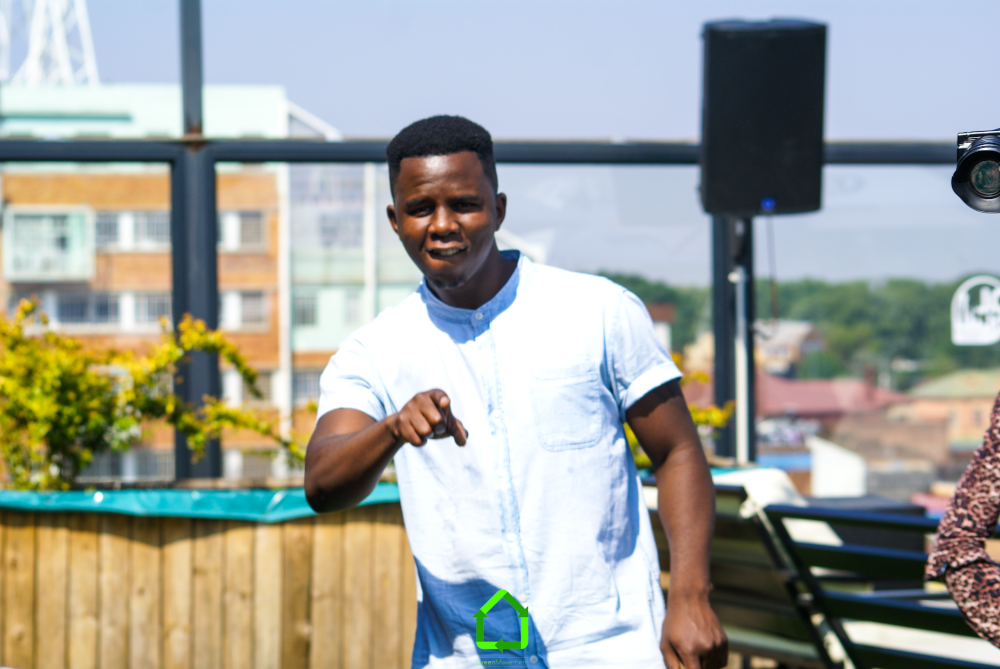
Zethu Kunene, chief executive @ GreenMovement Energy
As a teenager, Zethu Kunene read that, by 2050, plastic in the ocean would outweigh the fish. This prediction blew his mind so he looked further into the state of environmental affairs, propelling his desire to participate in conservation.
GreenMovement Energy began operations with waste recovery as their primary function: going from dustbin to dustbin, separating out recyclable materials and then selling them to a materials recovery facility. When collecting and safely discarding sawdust for a client, they realised that it could be used as an input in their transformative and conversion processes. “After a few months of research, we created the first Woodie, a solid fuel replacement for charcoal, coal and firewood.”
Kunene says that sustainability is not a synonym for environmental conservation; sustainability is about environmental protection, social equity, economic development and meeting our own needs without compromising the ability of future generations to meet theirs.
“The importance of developing sustainable business practices is to create strategies that commit to the long-term preservation of people, planet and profit.”
Kunene says that increased public awareness of environmental issues helps to change the corporate landscape. — Andie Reeves
To learn more, visit: www.greenmovementenergy
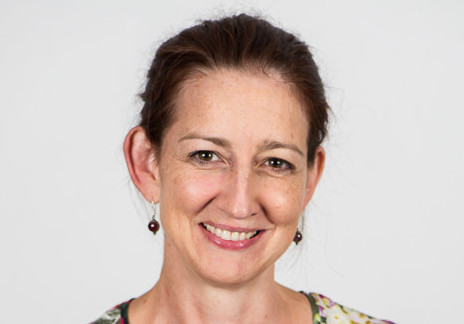
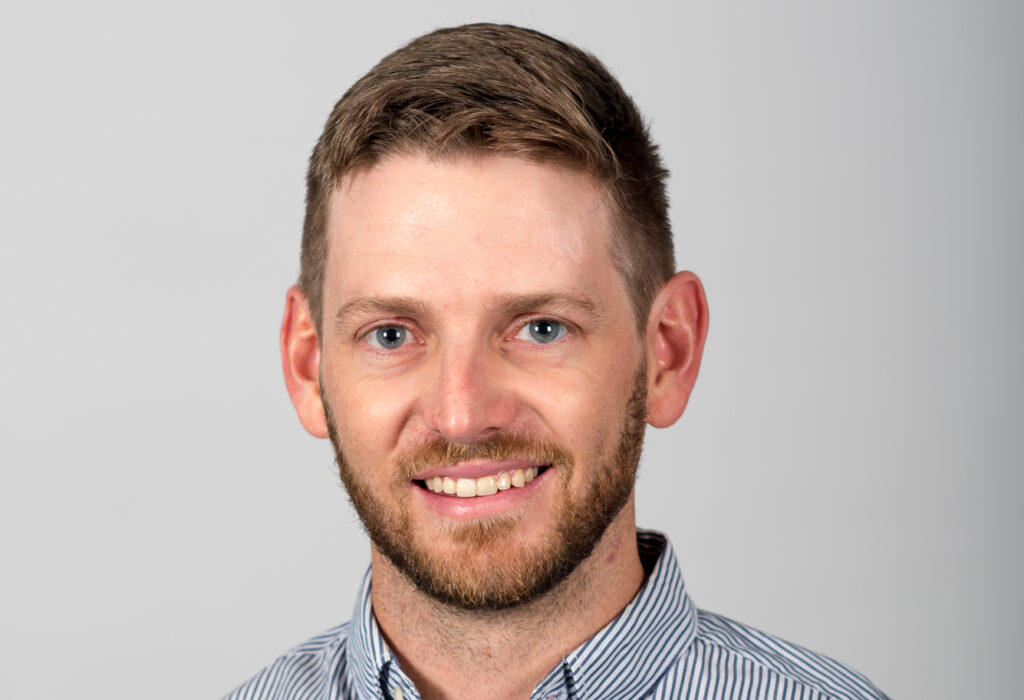
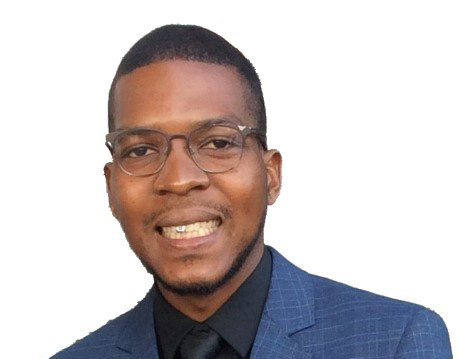
Kirsten Barnes, Oliver Bonstein, Taahirah Ghoor, Nicholas Fordyce, Cilnette Pienaar, Thula Zondi: SA Plastics Pact
The South African Plastics Pact is a collaborative initiative bringing together the South African plastics value chain — businesses, government, nongovernmental organisations and other groups — to tackle plastic waste and pollution at its source while driving a circular economy.
Plastics are versatile, low-cost and enable many aspects of our lifestyle, but the negative effects of plastic pose a threat to the environment because of irresponsible consumption and pollution; incineration of plastic waste contributes to increasing carbon dioxide emissions each year. For the Pact, circularity — keeping products and materials in use and regenerating natural systems — is key. It helps to preserve valuable environmental resources and heritage while creating desperately needed employment opportunities.
The Pact has an ambitious, sustainability-driven plan to achieve by 2025: through redesign, innovation and alternative delivery models, they aim for 100% of plastic packaging to be reusable, recyclable or compostable. — Shai Rama
To learn more, visit: www.saplasticspact.org.za
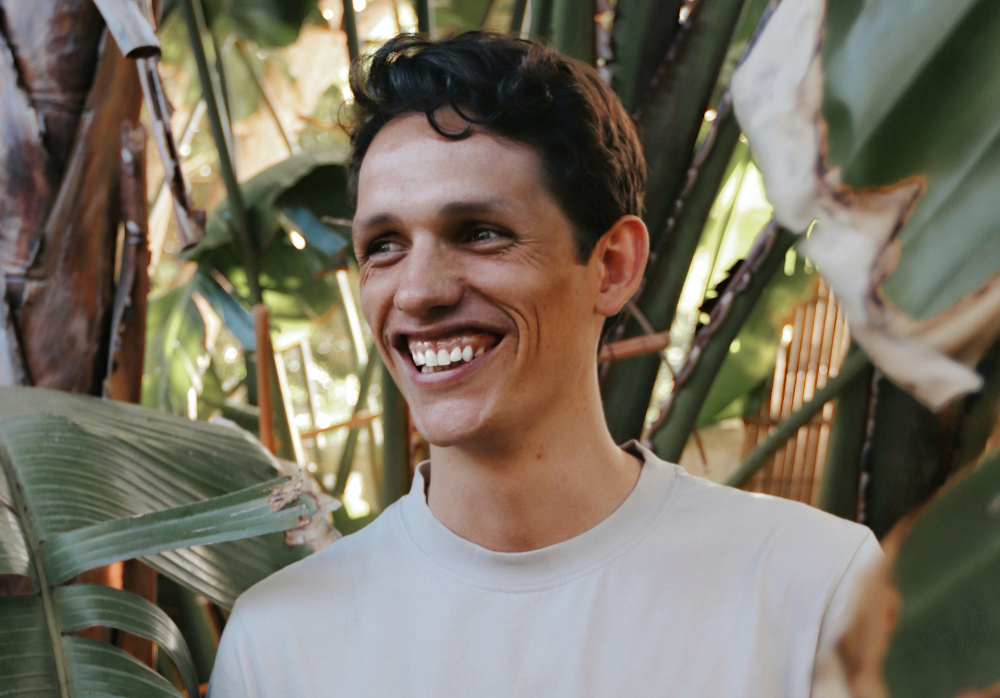
Trent Pike, co-founder and managing director @ Mielie Mailer + Oh Oat
“It was during my time travelling that my love for the planet grew. With that love grew a realisation that our planet’s wild places are worth fighting for. I also realised that I had the opportunity, and therefore the responsibility, to do my part.”
Trent Pike, 27, is the co-founder and managing director of two successful companies – Mielie Mailer and Oh Oat – and is part of a new generation of entrepreneurs making sustainability a core part of their business.
Meilie Mailer aims to replace plastic packets used by courier companies with biodegradable bags that are made using mielies deemed unfit for human consumption.
A year after Meilie Mailer was launched, Pike started Oh Oat, a company that produces fresh oat milk as a dairy replacement. In keeping with his all-or-nothing approach, Oh Oat’s packaging is now repurposed wine bottles.
“My companies have two objectives. One is to create products that replace unsustainable ones. Secondly, we aim to show that the business-as-usual model is as outdated as it is unnecessary. You can create a successful company while respecting and looking after all your stakeholders and not only your shareholders. — Andie Reeves
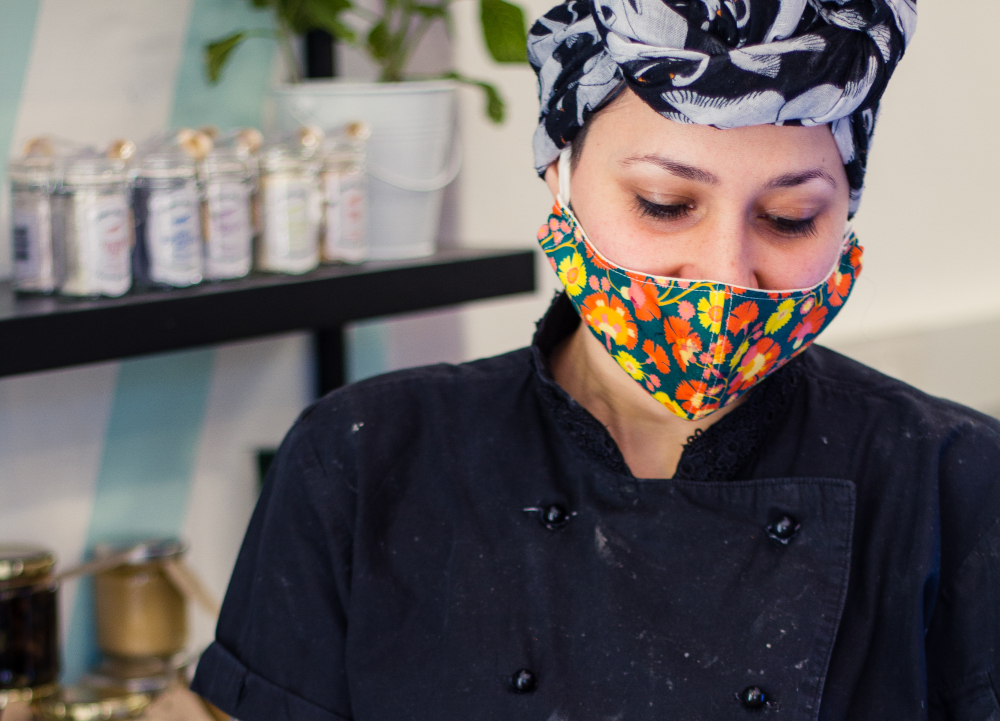
Johke Steenkamp and Carla Gontier, co-owners @ Grumpy & Runt
Grumpy & Runt was born to make veganism accessible, interesting, fun and enticing.
Grumpy & Runt’s vegan approach is to protect animals, and part of that ethos involves creating a more sustainable world for all life forms. Veganism is one of the easiest ways to lessen your own carbon footprint, says Gontier. She elaborates: “Studies have shown that removing meat and dairy products from your diet can cut your carbon footprint by 73%.
We all want to be able to go visit beautiful parts of the world or enjoy them where we live, and if we keep only taking things from the earth without considering our own impact, then that life and that dream gets further away from us.”
The future of Grumpy & Runt looks promising as the pair work toward creating zero waste by dealing with suppliers that offer goods that are not wrapped in plastic, and educating staff on a zero-waste approach, while their recycling programme ensures that waste doesn’t end up in landfills. — Shai Rama
Pictured is co-owner and chef Johke Steenkamp
To learn more, visit: www.grumpyandrunt.com
category: Urban Spaces
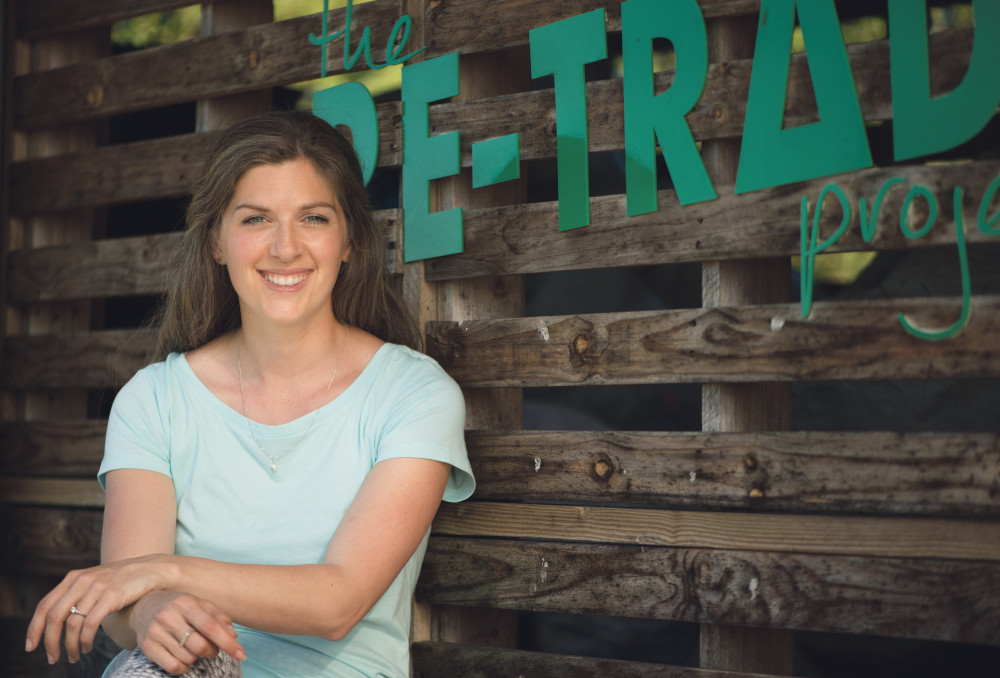
Category winner: Maria Grewar, founder and director, The ReTrade Project
The ReTrade Project is a community-based recycling and social empowerment initiative. It seeks to sustainably provide members of the community with an opportunity to be environmentally responsible while they gain access to food and other basic essentials. Passionate about restoring hope and dignity to poor and marginalised people in South Africa, the team builds relationships and provides resources to which individuals would not have had adequate access. Families in need can collect recyclable waste such as tins, plastic bottles, cardboard, paper and glass, and exchange this waste for basic goods at the in-house Trade Store, to improve their lived environment while earning an income.
Since moving to this beautiful country 12 years ago, a need to preserve the landscape and creatures who cohabit it began to take root in my life. It fills me with an intense longing to see my children and grandchildren be able to enjoy this pristine part of the world in which we live, and to live equally well among others with dignity and compassion.
Maria Grewar is the founder and director of the ReTrade Project in Port Elizabeth. She moved to South Africa from America when she was 18 and developed a love for this delicate and diverse country – as well as her newfound proximity to the beach and bush. Sustainability became important to her when she began to realise just how fragile South Africa’s ecosystems really are. She also noticed large portions of South Africa’s vulnerable communities living in some of the most toxic and polluted places in the country.
Considering that the country’s economically disadvantaged citizens are also disproportionately affected by poor environmental conditions, it makes sense for The ReTrade Project to provide an intervention that starts in and is driven by the community it serves. While the value of the community clean-up aspect of the project is easily apparent, its layers of value also involve improving communities by providing environmental education that will have far-reaching, long-term effects, and breaking the cycle of poverty that has its own role to play in the lack of community value. The project has initiated a volunteer programme, which allows members of the community to offer a few hours of their time to assist in the Trade Store or with education programmes.
Grewar believes that South Africa’s human and environmental diversity is rare and unique, and she longs for that value to be preserved for future generations. She elaborates: “Since moving to this beautiful country twelve years ago, a need to preserve the landscape and creatures who cohabit it began to take root in my life. It fills me with an intense longing to see my children and grandchildren be able to enjoy this pristine part of the world in which we live, and to live equally well among others with dignity and compassion.”
The ReTrade Project aims to assist individuals who require immediate aid by providing for their basic human needs, as well as educating them and the wider community on ecologically sustainable practices, and Grewar is excited about the ReTrade Project’s future plans — both social and environmental. In the next five years, the aim is to see their education programmes and mobile buy-back centres rolled out across South Africa. She also wants to collaborate with other sustainability organisations, projects and programmes, and would welcome potential partnerships within her field. Grewar strongly believes that educating people about waste and recycling, while giving them the opportunity to provide for themselves and their families, is a small step towards the fulfilment of a vision that will uplift the people and the world in which we live. — Shai Rama
Finalists
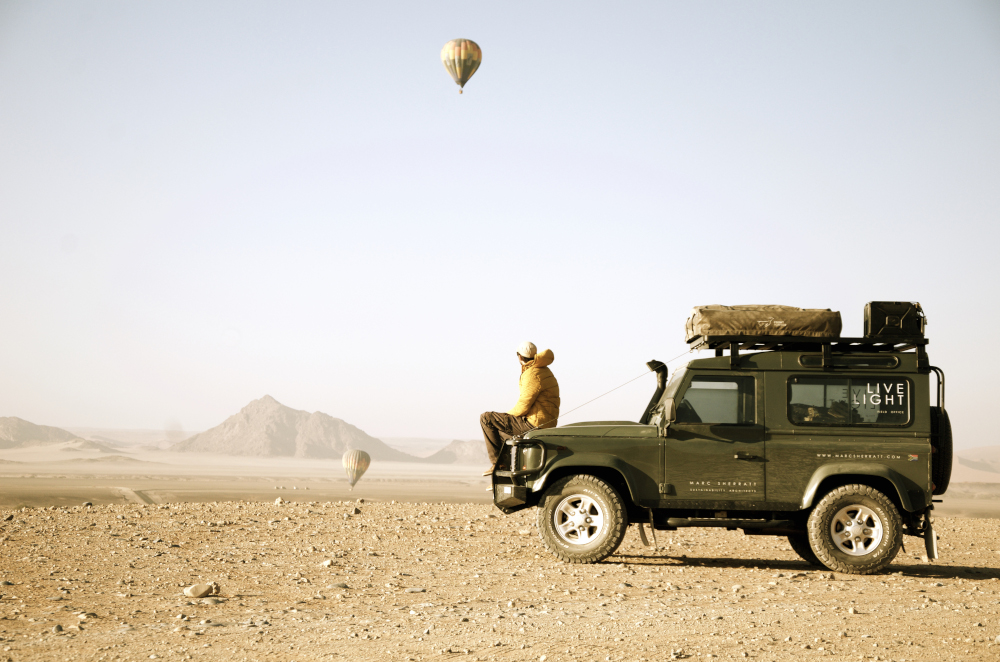
Marc Sherratt, founder @ Marc Sherratt, Sustainability Architects (MSSA)
For his master’s, Marc Sherratt designed a building that reintroduced the locally extinct and endangered Cape Vulture back into the City of Johannesburg.
His project challenged current approaches to conservation areas. Entering the working world, he noticed a gap in the market for an architect specialising in sustainability. With support from his wife, a senior green building consultant, he founded Marc Sherratt, Sustainability Architects (MSSA), with a mission to “reverse local extinction through sustainable architecture”.
Sherratt sees green buildings as a catalyst to restart the building industry while employing people at scale.
“For me the responsibility to live within the planet’s ecological capacity is part of what it means to be human,” Sherratt says.
The couple travel Southern Africa researching ecological and cultural systems and design wildlife migration routes for species such as elephants so they can once again move unhindered across our country. — Fatima Moosa
To learn more, visit: www.marcsherratt.com
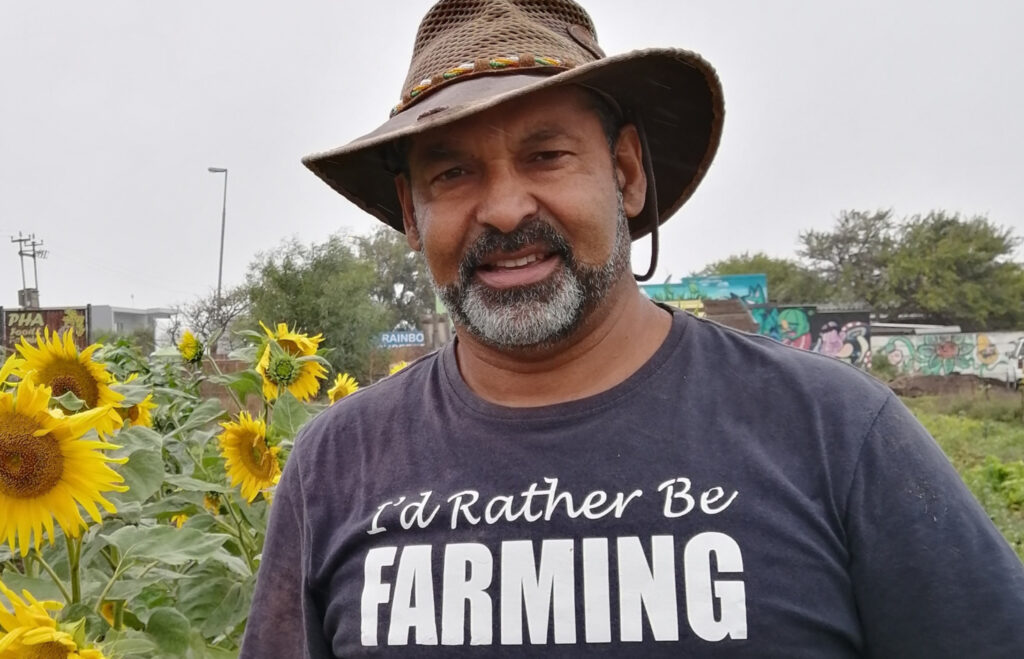
Nazeer Sonday, founder @ Philippi Horticultural Area Food and Farming Campaign
Nazeer Sonday is a small-scale farmer and chairperson of the Philippi Horticultural Area Food and Farming Campaign. He was born on a smallholding in Philippi outside Cape Town. “My family was removed from the area in 1973 under the Groups Areas Act. I returned in 1991 and bought one hectare of land, where I pursue a livelihood as a small-scale farmer,” he says.
Sonday has been involved in community development since 2008, when he started the area’s first non-racial civic association and an emerging farmers’ group. These organisations merged in 2013 and became the PHA Food and Farming Campaign.
Sonday defines sustainability in farming as making sustainable use of natural resources such as land, soil, water and biodiversity. But Sonday says that these resources are degraded and to just maintain their status is not enough: instead, he believes in regeneration.
“Our objectives are to protect the PHA agricultural land from urban sprawl for the benefit of everyone in the city. We also aim to protect the Cape Flats aquifer and to develop a small-scale farming model.” — Nicolene de Wee
To learn more, visit: www.phacampaign.org.za
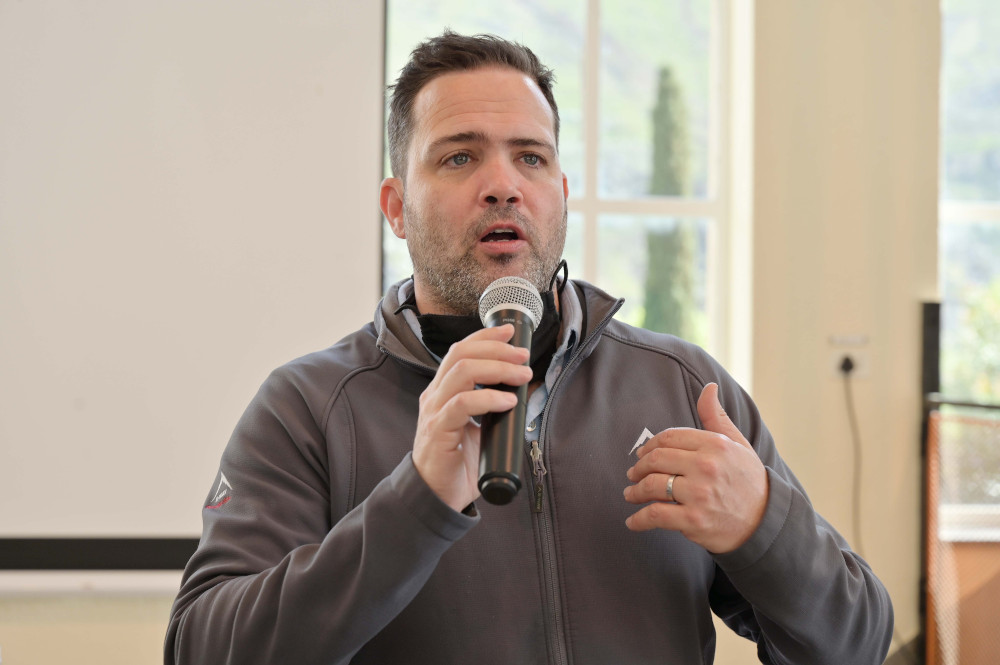
Gareth Morgan, director: Resilience @ City of Cape Town
Gareth led the team that developed the first Cape Town Resilience Strategy – an innovative roadmap for a city responding to globalisation, urbanisation, rapid technological advancement and climate change.
The strategy drew learnings from the region’s recent devastating drought, and applied them to a wide range of possible shocks (flooding, cyber attacks and power outages) and stresses (unemployment, poverty, food insecurity and climate change). South Africa is dealing with the climate crisis, urbanisation, technological change and globalisation, resulting in occasional shock events. Developing ways to build resilience is important to minimise the impact of shock events, and will help with a quicker recovery.
The City of Cape Town has been implementing this strategy for more than a year, and 20 of the actions in the strategy have been deployed during the Covid-19 pandemic response. In total, about 50 of the 75 actions have already been partially or fully implemented. Morgan and his team are currently engaged in the development and deployment of large infrastructure portfolios, and are aware that an important challenge for the future is to build resilience lenses into all processes and decision-making.
“Sustainability is important, but for systems to ultimately be sustainable, they need to be resilient. A city can only strive to overcome its vulnerabilities to be increasingly more resilient, making adjustments as and when new realities emerge.” – Shai Rama
To learn more, visit: www.capetown.gov.za
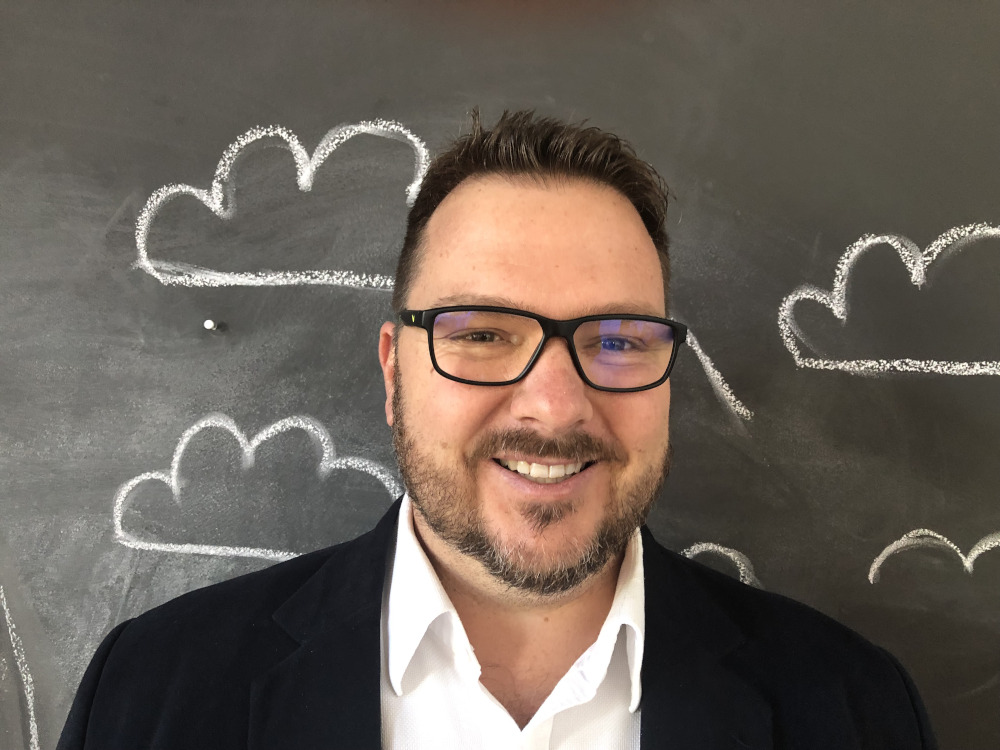
Fabio Venturi, chief executive and founder @ Terramanzi Group
“Closer to home is the Green School South Africa project that we are very passionate about. Here, our job is to ensure that the project achieves a Living Building Certification and becomes the greenest school in the world,” he says.
Fabio Venturi, CEO and founder of the Terramanzi Group, has garnered 18 years of experience across both the government and private sectors of the green economy.
The Terramanzi Group operates across Africa and is focused on regenerative design and UN SDG 2030 integration, from facilities to smart cities.
Fabio Venturi is a founding member of the Environmental Assessment Practitioner’s Association of South Africa, and is a certified carbon footprint analyst and energy efficiency auditor. His entrepreneurial drive to innovate and influence has resulted in multiple awards. He says sustainability has always been a central theme to their work, and is regarded as the only logical way to conduct business and secure the wellbeing of people and natural resources. — Nicolene de Wee
To learn more, visit: www.terramanzi.co.za